NBA matchmaker: Finding the perfect teams for 10 free agents

Your teams. Your favorite writers. Wherever you want them. Personalize SI with our new App. Install on iOS or Android.
So much of the reporting leading up to the NBA’s free agent bonanza expresses one-sided interest. Team X wants to meet with Kevin Durant. Mike Conley is open to signing with Team Y. As a fun exercise, let’s try to guide both to a sensible middle.
Beginning at midnight on July 1, teams and players can come to agreements in principle on new contracts—some richer than the league has ever seen thanks to an inflated salary cap. For today, we aim not to predict where a player might actually end up, but which circumstances seem to make the most sense for all parties involved.
Kevin Durant: Oklahoma City Thunder
Seeing great players switch teams charges basketball fans with a sense novelty and discovery. Consider the possibility of Durant joining the Warriors. Even during the season, the mere mention of the idea incited a spirited debate over Durant’s optimal basketball environment. Would Durant be content moving without the ball next to Stephen Curry or does he live to cook? The only way to know for sure would be to transplant KD into an entirely different kind of basketball ecosystem, not only separate from Russell Westbrook (whom Durant has played alongside for eight years) but the entire Thunder way of life.
• Kevin Durant's free agency: Why anything is possible this summer
Everything about that scenario radiates real basketball intrigue, not to mention the rivalry politics of Durant leaving one West contender—and demolishing it in the process—to join another. Yet in the wake of the Thunder’s splendid (if ultimately failed) postseason run, Durant’s return simply makes too much sense to properly indulge the daydream. Oklahoma City has done right by Durant. Westbrook has developed wonderfully alongside him. Head coach Billy Donovan mounted an impressive first NBA season full of gradual refinements. Sam Presti and the Thunder front office have maintained a constant proactivity to keep OKC competitive and refreshed at every step, through difficult decisions at all. Durant lives in a city he can call home, works for an organization that has an endearing, unified ethos, and has a chance to win a title next season. Whatever part of Durant might want to experience something different is likely to be quieted by the Thunder’s many virtues.
A one-year deal with a player option attached would give Durant a season to run it back with a similar team that has, with the trading of Serge Ibaka for Victor Oladipo, already taken steps to evolve. Doing so would position Durant to make dramatically more money on a max deal under an even higher salary cap and in a different earning bracket. It would allow him and Westbrook to chart a path together, should they chose to, or agree to part ways. Not least of all: it would give Durant at least once more chance to attempt the same goal he has dedicated the last nine years of his life to.
• Open Floor Podcast: Kevin Durant sweepstakes and more FA chatter
Nicolas Batum: Golden State Warriors
When the Warriors kick the ball to Harrison Barnes in the corner, his best options are often to shoot or defer. Any other course can end in a mess; Barnes doesn’t have the shake in his game necessary to lose opponents off the dribble nor the complete view of the floor to play as a facilitator. And so his drives often end as awkward turnarounds in traffic or desperate fadeaways, none very promising. Whatever ball movement Golden State had trailed off in a wilt.
Give Batum those same opportunities and the offense hums. He would begin the scenario as a comparable three–point shooter, particularly when accounting for the quality of his shots over the course of his career. Yet if the defense forced him off the line, Batum could function as a variant of Andre Iguodala—more willing to score but fully capable of stringing the offense into its next stage. Charlotte’s offense came alive last season when Batum flanked Kemba Walker, an off-the-dribble threat, working in space. Golden State stretches both of those elements to geometric extremes to create even wider driving lanes and more consistent playmaking opportunities. The difference in age (Batum will be 28 in December while Barnes just turned 24), post defense, and potential salary (Batum is eligible for a higher max given his experience level, requiring that the Warriors unload a player like Andrew Bogut to sign him) will give Golden State plenty to think about. So, too, will the possibility of the market making Barnes a max player—calling into question whether the Warriors can do better with such a significant salary.
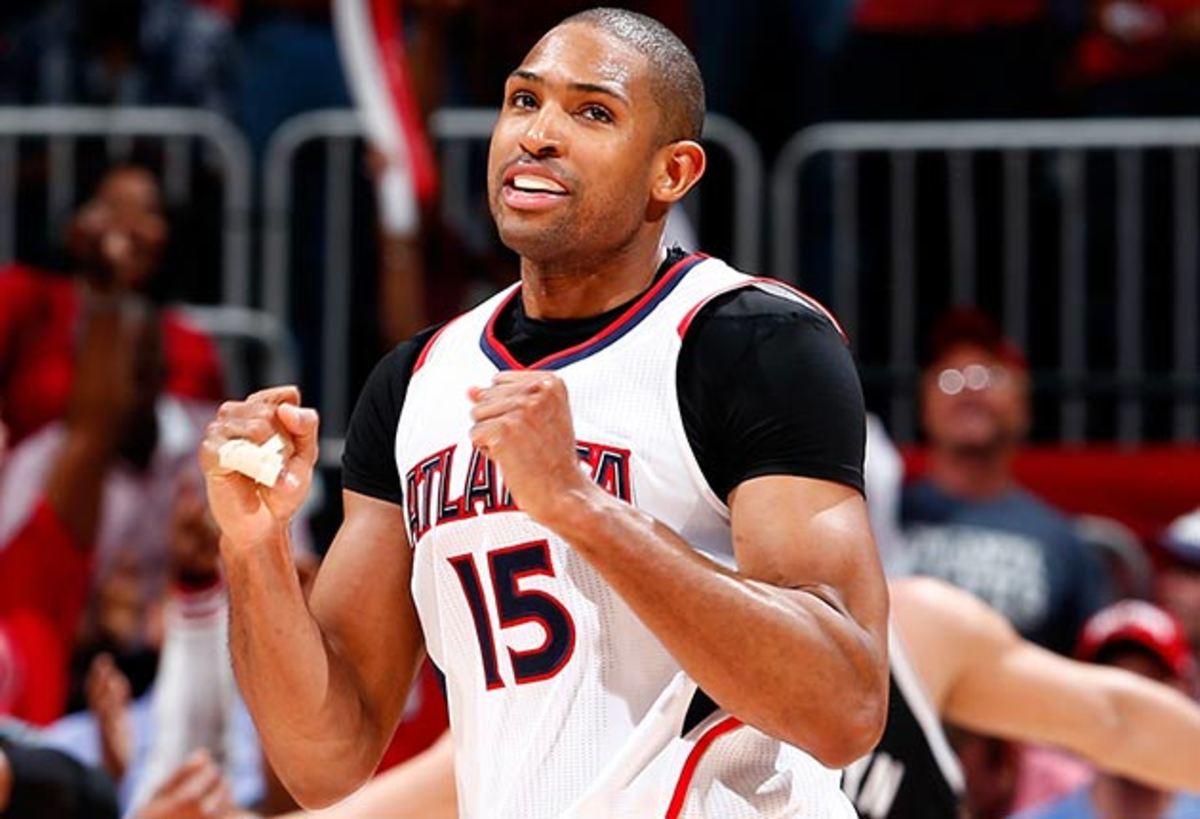
Al Horford: Detroit Pistons
Detroit quietly cleared $6.5 million in salary this week by trading Jodie Meeks, who missed almost the entirely of last season with a foot injury, to Orlando. That—along with Andre Drummond’s preposterously low cap hold—further enables the Pistons to explore their options in free agency. Horford is among their targets, according to ESPN.com’s Zach Lowe, and makes perfect sense. Andre Drummond doesn’t just need a floor-spacing big alongside him. He needs a playmaker; Reggie Jackson is single-handedly responsible for so much of Detroit’s ball-handling and shot creation that it makes the offense vulnerable. A few intermediaries would go a long way.
Horford, for example, could man the high post and pick out cutters with passes, catch on the move and find open teammates, or act as an outlet on the weak side. So long as wings like Kentavious Caldwell-Pope, Marcus Morris, and Stanley Johnson are the rotation norm in Detroit, facilitation would have to be found elsewhere. Horford could be stellar in that capacity while also working as the team’s second-unit center and helping to coach up Drummond on the finer points of positional defense. The fit is rather tidy from the Pistons’ perspective. At issue is whether Detroit’s roster (and the chance to finally play power forward on a more regular basis) interests Horford enough to leave a solid situation in Atlanta and the financial particulars of the Pistons clearing a bit more room for him to land.
Hassan Whiteside: Miami Heat
Thus far, only one basketball organization in the known world has allowed Whiteside to play to his ability without driving everyone around him mad. Remove him from that contained environment at your own risk. I have no doubt that Whiteside’s skillset could travel well to many other organizations with interior needs. It’s their capacity to deal with the rest of Whiteside’s infamous profile that seems somewhat concerning—particularly once Whiteside inks a huge deal and satisfies the biggest motivator of all. A pre-contract Whiteside scared opponents around the rim and put up monster numbers, but frustrated teammates and coaches in the process. A contract year, too, seemed only to encourage Whiteside to chase stats (leaving his feet too often for the sake of blocks, failing to box out and secure contested rebounds while making an effort for uncontested ones) at the expense of the little things that genuinely help teams win. What kind of player might Whiteside be once he’s no longer financially encouraged to be on his best behavior?
That question alone is so daunting that it would be best to remove all other variables possible. There are financial difficulties in Miami bringing back Whiteside at what he would deem an acceptable price, not to mention a potential optics problem in paying Whiteside big while losing or underpaying Dwyane Wade. Still they should try to make it work. Whiteside, imperfect as he is, provided enough to Miami to make a future investment worthwhile. This franchise could soon see the end of Wade’s career and, in a particularly sad scenario, the end of Chris Bosh’s. Whiteside isn’t reliable enough to follow them as a pillar of the organization but could hold the Heat over until they find a star who is.
• Who wants to pay Hassan Whiteside? Examining his potential suitors
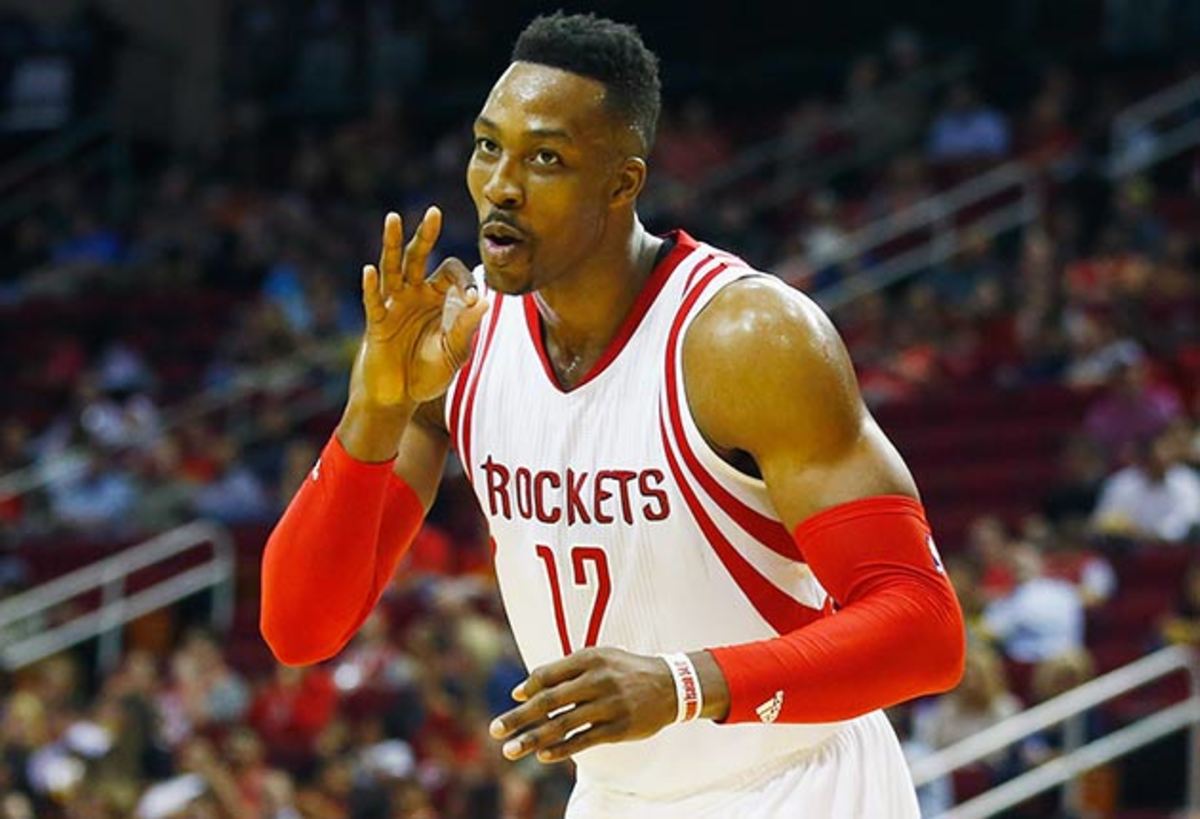
Dwight Howard: Charlotte Hornets
It’s getting more and more difficult to find Howard a comfortable free agent home, which is precisely why some executives reportedly predict a tepid market for his services. Howard requires the catering of a high-maintenance superstar but no longer performs like one; the post touches he demands return little, he’s neither much of a leader nor an easy complement to other stars, and even Howard’s best contributions (defense, rebounding) can waver with his injuries and interest level. Some teams will understandably spare themselves the trouble.
Charlotte could be a different story. The shape of the Hornets’ roster is changing with the joint incidence of so many players’ free agency. Batum, Marvin Williams, Al Jefferson, Courtney Lee, and Jeremy Lin are all free to cash in with the biggest deals they can find. The trick for Charlotte lies in maintaining a competitive roster while keeping some but not all of those contributors—an exercise that cuts to the heart of what the Hornets value and where they believe their success comes from.
Howard’s addition would represent an evolutionary step consistent with Charlotte’s playing ideals. Much of what Cody Zeller can do Howard can do better, and much of what Jefferson did poorly Howard has historically done well. There should also be room for the Hornets to make a run at Howard while still offering Williams, a smart frontcourt pairing, a competitive wage. Doing so would likely cost Charlotte a chance at returning Batum. It’s a hard call, though the Hornets as they were are about to become wildly expensive for one of the East’s middling teams.
Howard, for his part, should be looking for spacing-driven teams in need of a defensive big. Charlotte qualifies. Head coach Steve Clifford, who coached Howard as an assistant in Orlando, is the closest thing the league has to a Stan Van Gundy surrogate. There could be room in his offense to indulge Howard’s post-up fancy without veering into chronic inefficiency and a familiarity to his defense that could help Howard to center himself. There’s no turning back the clock, but a team like the Hornets might at least help Howard tap back into what made him such a force in the first place.
Kent Bazemore: Memphis Grizzlies
Stable wing play has eluded Memphis for years, whether due to one–way players who create lineup imbalances or swings for late-career shooters who haven’t quite held up as intended. Bazemore gives the Grizzlies an opportunity to remedy the situation with functional all-around play. On his own, Bazemore isn’t quite accurate enough from the perimeter to be a top three-point option nor savvy enough defensively to be a first-rate defender. What he brings is a general utility underlined by resourcefulness and energy. Success as a role player is often a function of limiting liabilities. Bazemore, through his patient development, has done that in a way that would allow Memphis to make the most of his explosive streaks in transition and practical skill set.
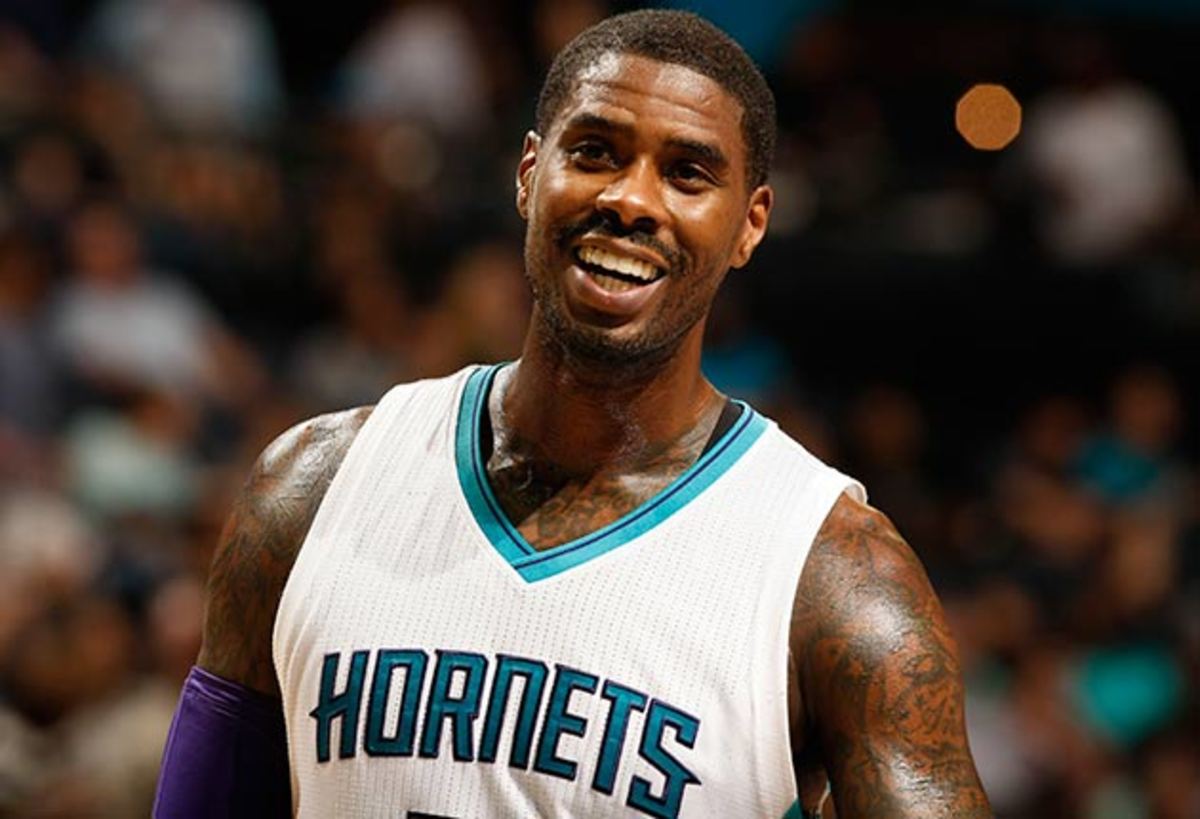
Marvin Williams: Indiana Pacers
If Indiana wants to add juice to its offense through tempo, it should start by adding versatile wings actually open to the idea of playing power forward. Williams did just that for the Hornets last season and might be the most balanced stretch big on the market for sub-max spenders. Allow him to take the matchups that Paul George, whether by prioritization or preference, would not. What Solomon Hill was for stretches in the playoffs, Williams could be full time: a long, willing defender with proven long-range shooting ability. It’s a shorter-term play given that Williams is already 30, though Indiana has operated with the intent to field competitive teams throughout a reorganization of its roster and coaching staff. Williams would make the Pacers better in exactly the way they seem to want.
• NBA free agency: Backup options for teams chasing after superstars
Jeremy Lin: New Orleans Pelicans
New Orleans needs point guard insurance, if only to ensure that players of the caliber of Norris Cole and Toney Douglas aren’t put in a position to average more than 20 minutes a game. Jrue Holiday is a pre-existing condition; stress and leg injuries have limited the Pelicans’ lead guard to just 57% of the team's total games the last three years, forcing the team to monitor his minutes closely. An optimal addition, then, would be a guard capable of working both alongside Holiday and in his place. Lin fits the bill. His experience playing alongside Kemba Walker last season provides a nice template for how Lin’s counter-driving game could help a team like New Orleans. Other needs (shooting, first and foremost) will probably come first, but the Pelicans need to do all they can to better prepare for potential injuries and alleviate the on-court stresses on Anthony Davis. Lin can absorb that responsibility to greater effect than most any backup available.
• Gallery: Kevin Durant and who? Top 50 NBA free agents of 2016
Top NBA Free Agents of 2016
1. Kevin Durant
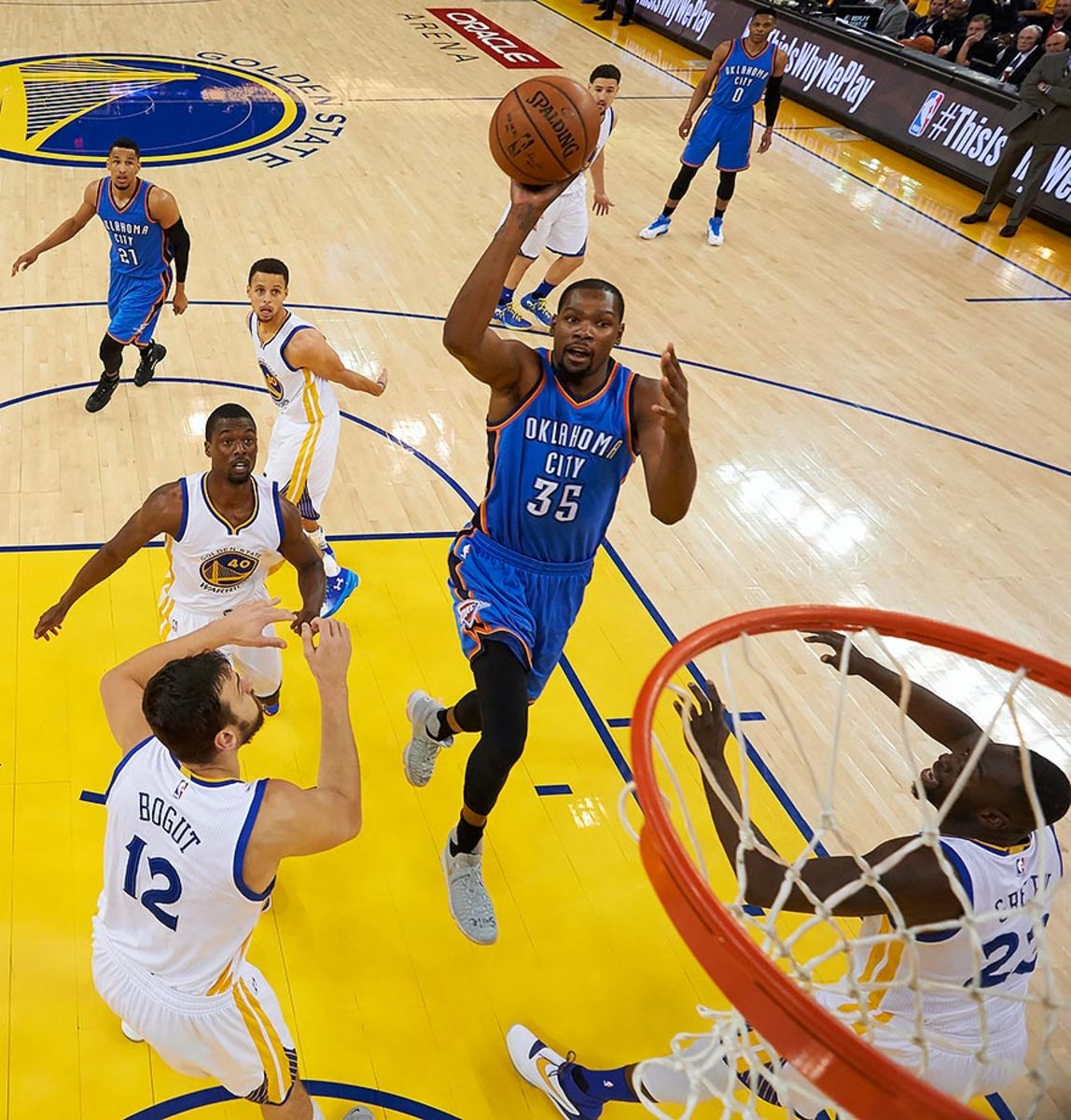
Durant is dominant at a position of relative scarcity, stellar as the centerpiece of an offense, flexible enough to augment his teammates, better on the boards than most will ever know, perfect in a role as the leader of a franchise, savvy off the dribble, efficient from all over the floor, ruthless to opponents while agreeable to teammates, and perhaps the most lethal small-ball player in a league that increasingly leans toward speed. Durant holds in his hand the power to reshape the future of multiple franchises. The Oklahoma City Thunder, who have more to lose with his decision than any other team, will wait breathlessly while KD deliberates between max offers.
2. LeBron James (player option)
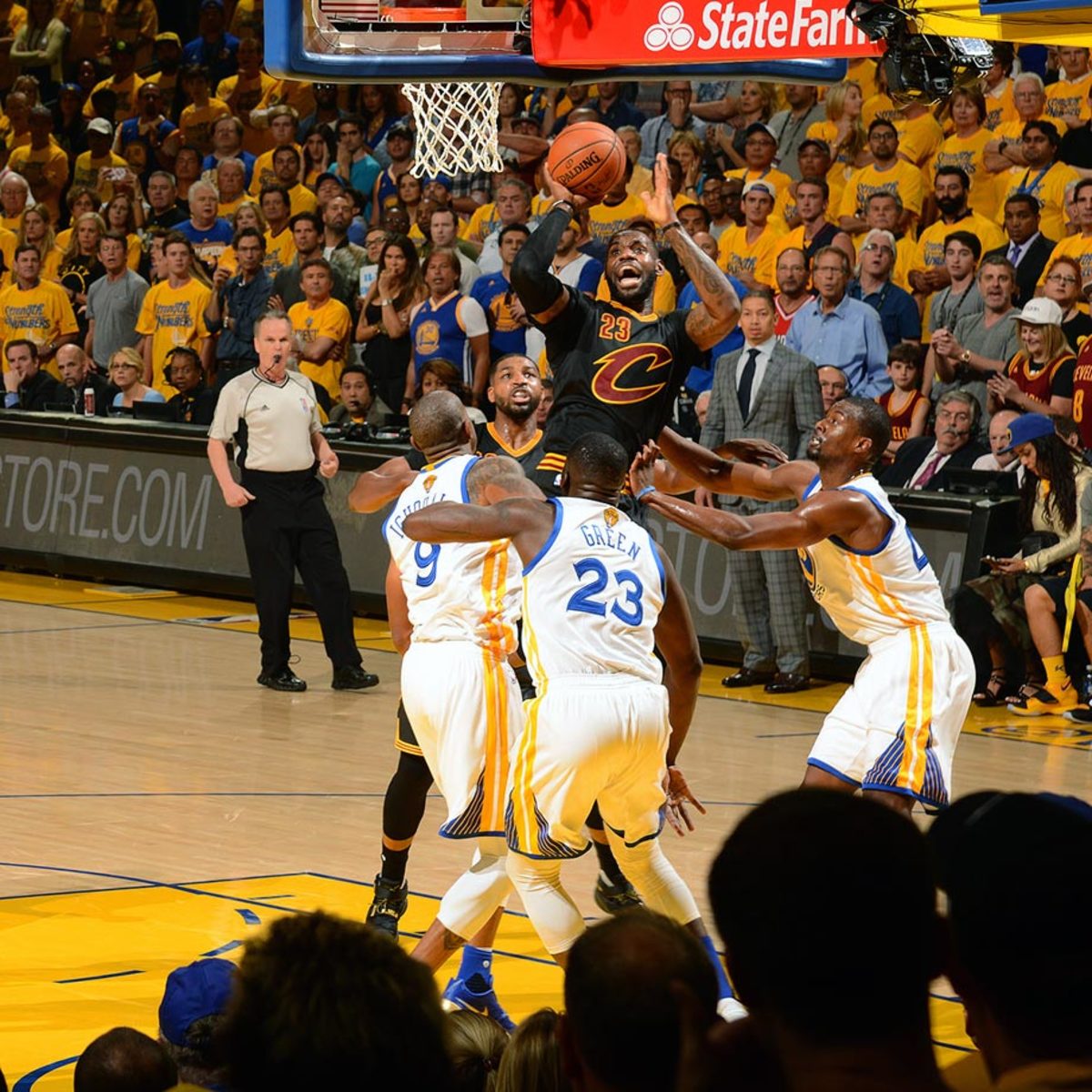
A word to teams around the league: Were LeBron actually available, you’d know. He hand-picked the Heat, let the Cavs know to clear room, and would surely call his own shot if there were any reason for him to leave Cleveland. There isn’t—so I wouldn’t wait up.
3. Andre Drummond (restricted)
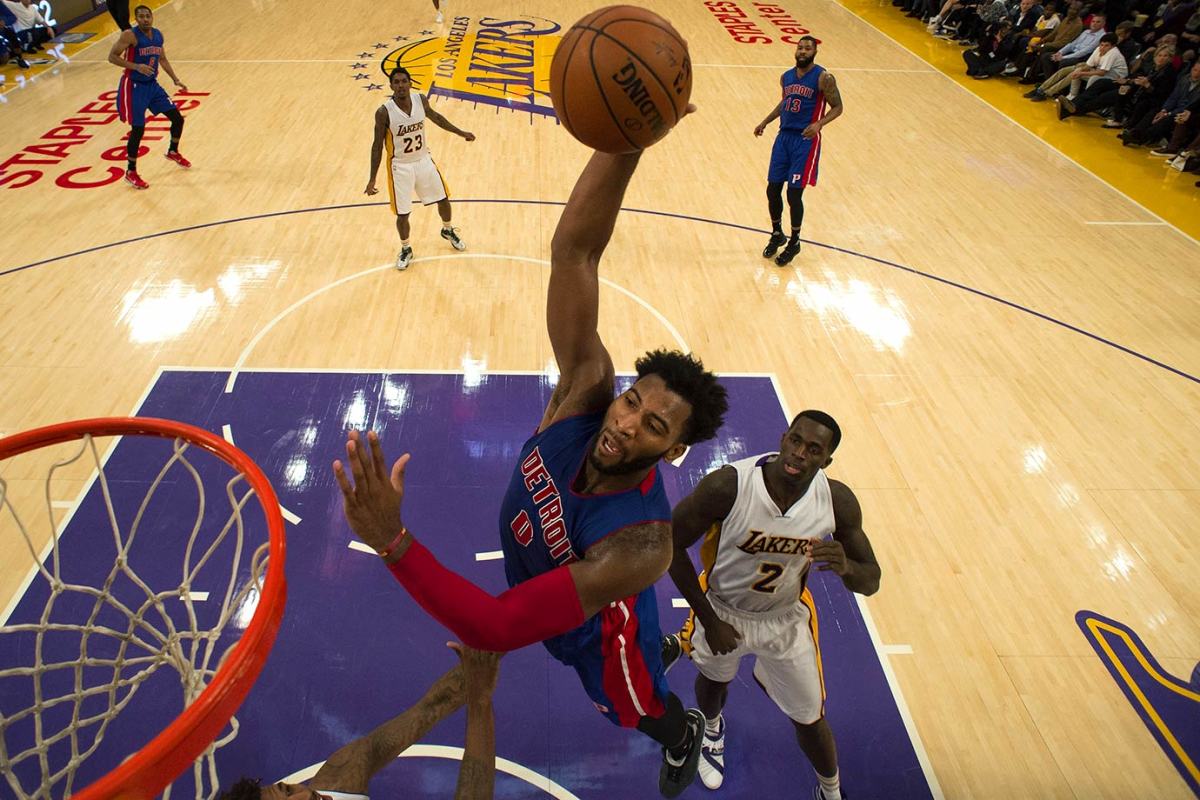
Restricted status should quell Drummond’s free agency from the start. Pistons owner Tom Gores is already on record as saying that Detroit will give Drummond the maximum allowed, leaving relatively little to negotiate. The Pistons will match any offer Drummond signs (should he opt for a shorter deal, for example) but otherwise seem likely to agree to whatever their upstart center wants. You don’t mess around with wildly productive, 22-year-old bigs—even those with a lot left to learn.
4. Al Horford
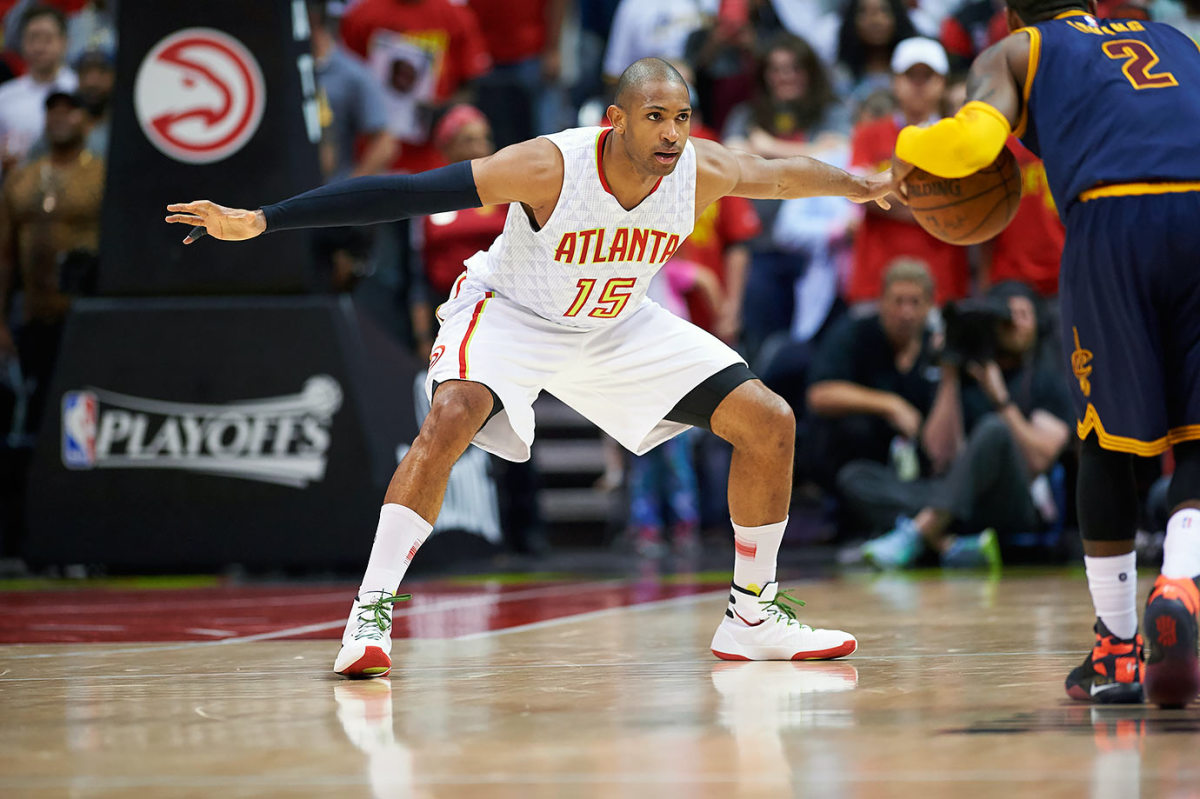
A player of considerable understatement. Watch the Hawks on occasion and you may gloss over Horford’s subtle defensive positioning, heady passing and gravity on the perimeter. Tune in on a more regular basis and his influence becomes glaring. Some players are simply best appreciated in volume, when the whole of their contributions form more complete trends. It’s no mistake that most teammates seem to fare better when Horford is around; his skill set slides neatly into whatever a coach aims to run and complements players of all kinds. That in itself is rare and attractive. Never discount the value of a player who opens up the playbook and a world of lineup constructions rather than limit them, especially as a hyper-flexible big.
5. Mike Conley
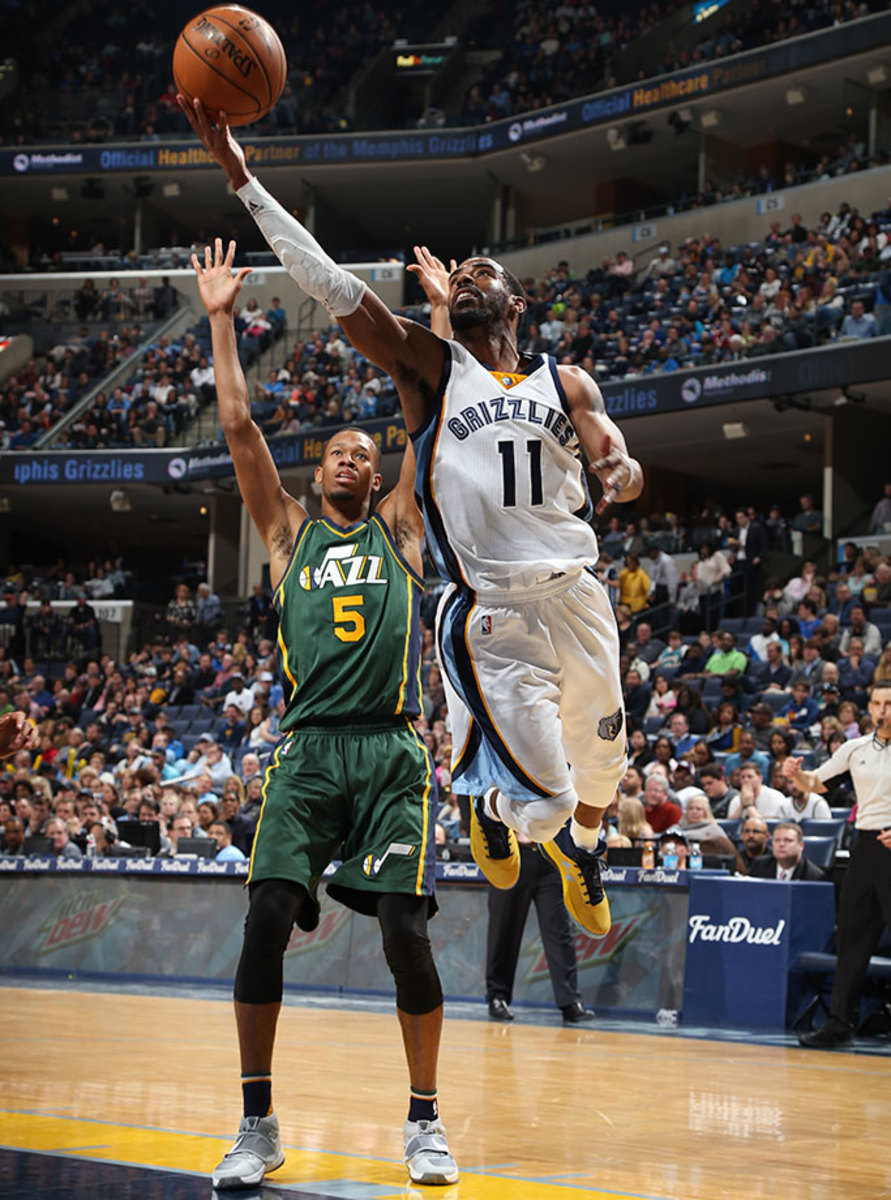
The best point guard on the market is also the only point guard of star-level consequence. Conley can satisfy a lot of needs—that for balance and composure, above all. Teams can play either fast or slow with Conley at the helm, while looking to attack from either inside or out. Unlike many ball handlers of his caliber, Conley actually adds to the operation of a team defense.The peril comes with scarcity. Angling for Conley’s services is a position of inherent risk given the alternatives. Once he makes his choice, a few teams will be left to parse middling backup plans or explore using their cap space more creatively. There’s a cost that comes with chasing any particular free agent, but the drop between Conley and his positional colleagues is the most precipitous of all.
6. Hassan Whiteside
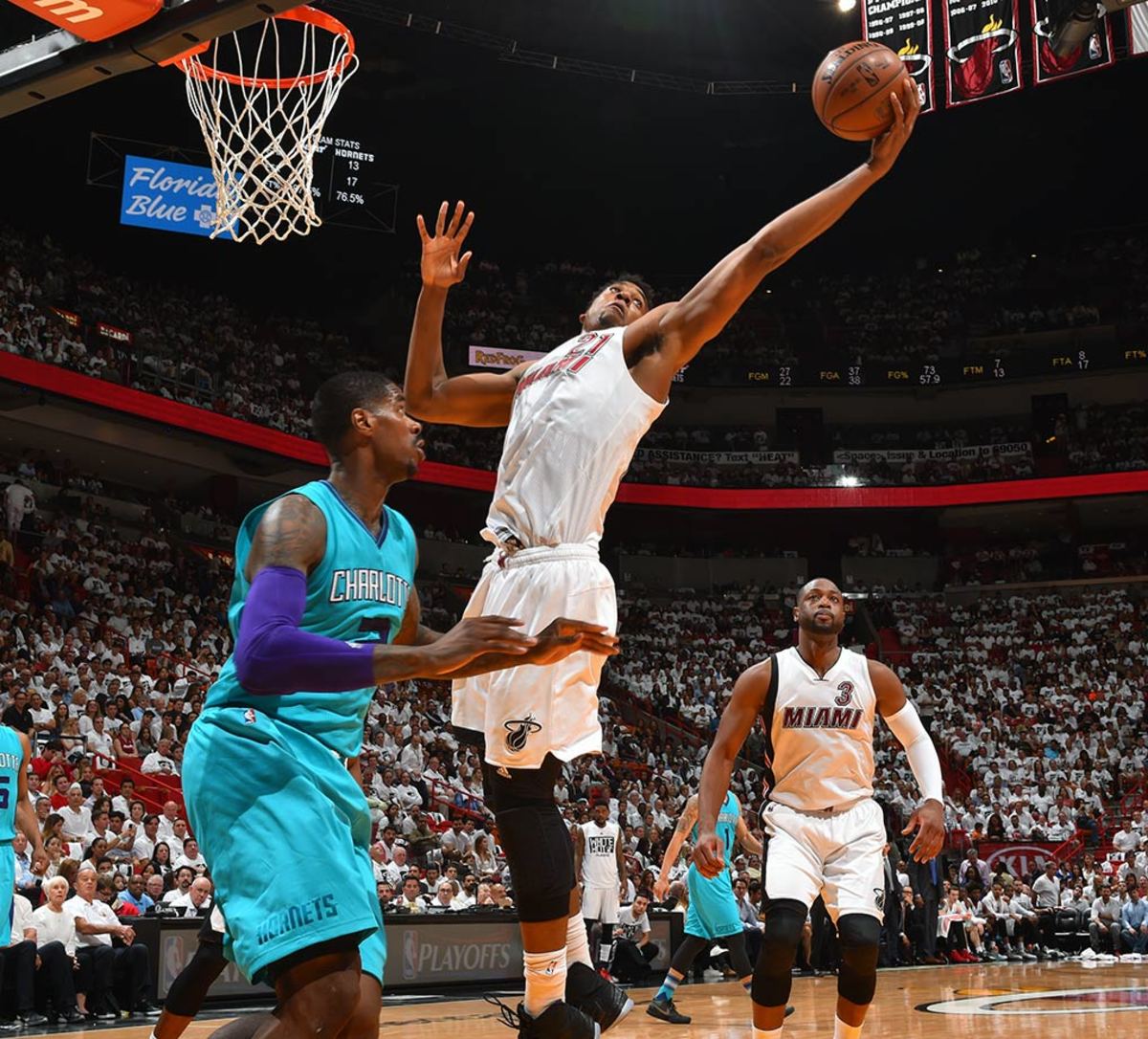
First, the irrefutable: Whichever team lands Whiteside will add one of the best shot-blockers, bulk rebounders, and alley-oop finishers in recent NBA history. Whiteside made himself into a max-contract player through a season and a half of considerable scrutiny and hard-earned production. One does not average 17.6 points, 14.7 rebounds, and 4.6 blocks per 36 minutes by accident. Nevertheless, there’s a disconnect between what Whiteside gives in terms of his raw counting stats and what he actually offers a team. His defensive presence, intimidating though it may be, is subject to Whiteside actually staying down on pump fakes and positioning himself to do more than chase blocks. Only Andre Drummond grabbed a higher percentage of available rebounds last season and yet Whiteside was guilty of letting his man run free rather than actually box him out.
7. Dwight Howard
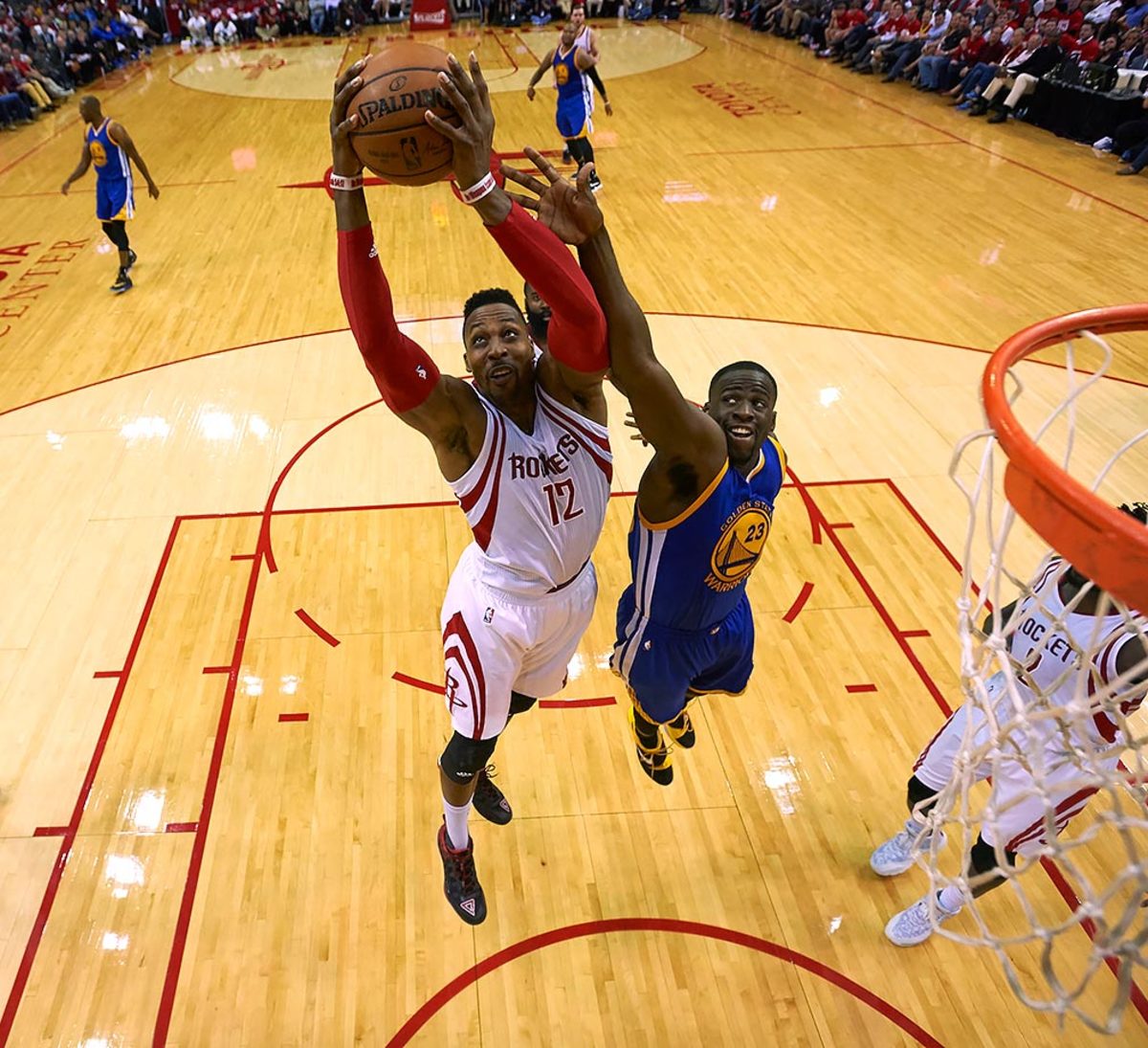
Injury and age have made Howard just another quality center. Gone is the Defensive Player of the Year frontrunner who, by his very presence, all but guaranteed a top-five defense. Departed, too, is the finisher who separated himself from the rest of the league with his nimble rolls to the rim and vertical explosion. Gone forever is the functional post scorer who could support an offense from the block, if not carry it comfortably. The Howard that remains has been muted by layering injuries and increasing age (30). It’s not always easy to appease him, but an involved and committed Howard is still worth the investment; the trick is finding the right offensive role as to make Howard feel essential without letting him hold the offense hostage for the sake of dead-end post-ups.
8. Bradley Beal (restricted)
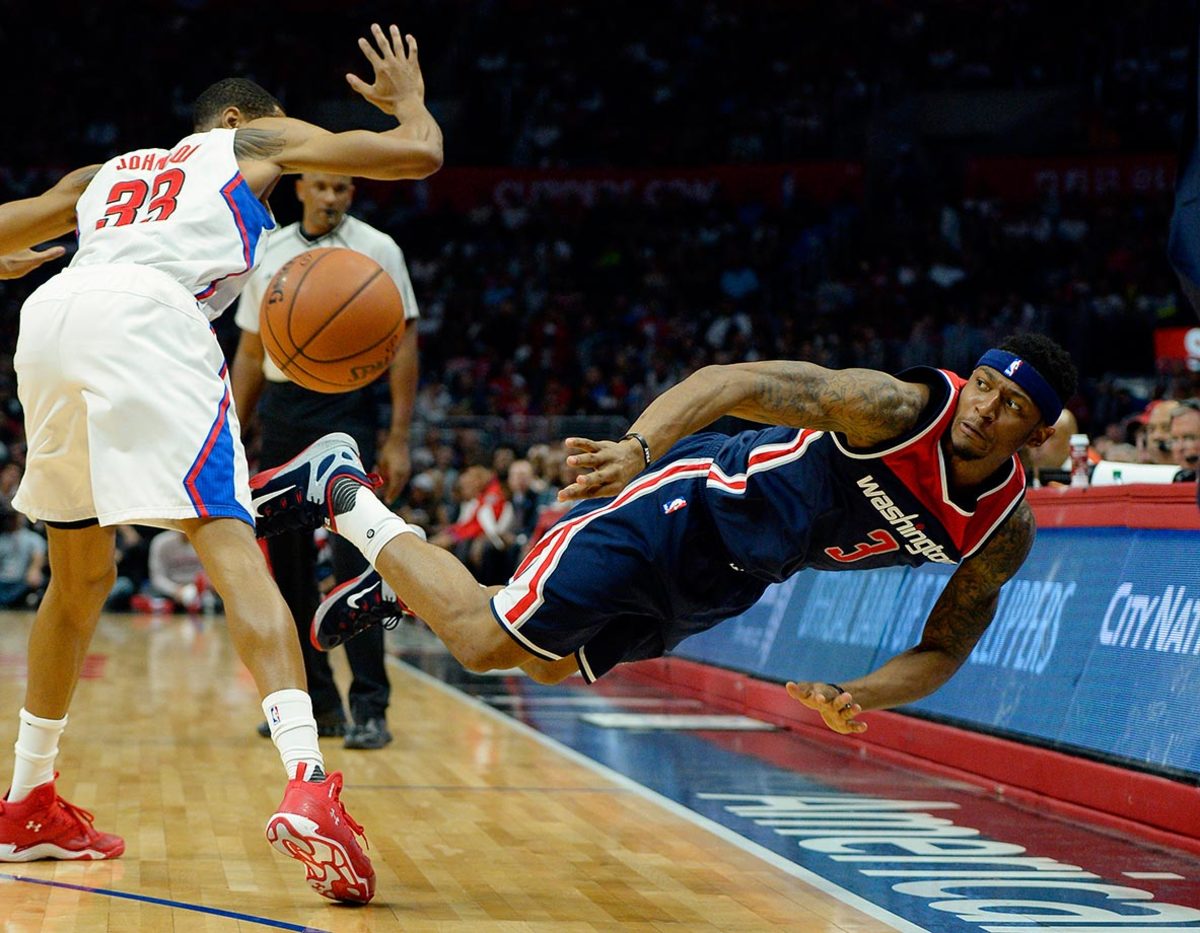
Beal, now four years into his NBA career, has yet to play a healthy season. On average he’s missed some 20 games a year, compromising the Wizards’ rotation for a quarter of their scheduled games. Still teams will line up to give Beal a huge contract because his game intrigues. The raw shooting ability, improving pick-and-roll work and competitive defense suggest max-contract credentials—even if Beal’s health has prevented him from assembling his complete game. Depending on your perspective, Beal’s age (22) either quells or fuels concern: Is his impending prime all the more reason to invest now or should teams be wary of Beal’s consistent pattern of injury? The truth is likely somewhere between.
9. Nicolas Batum
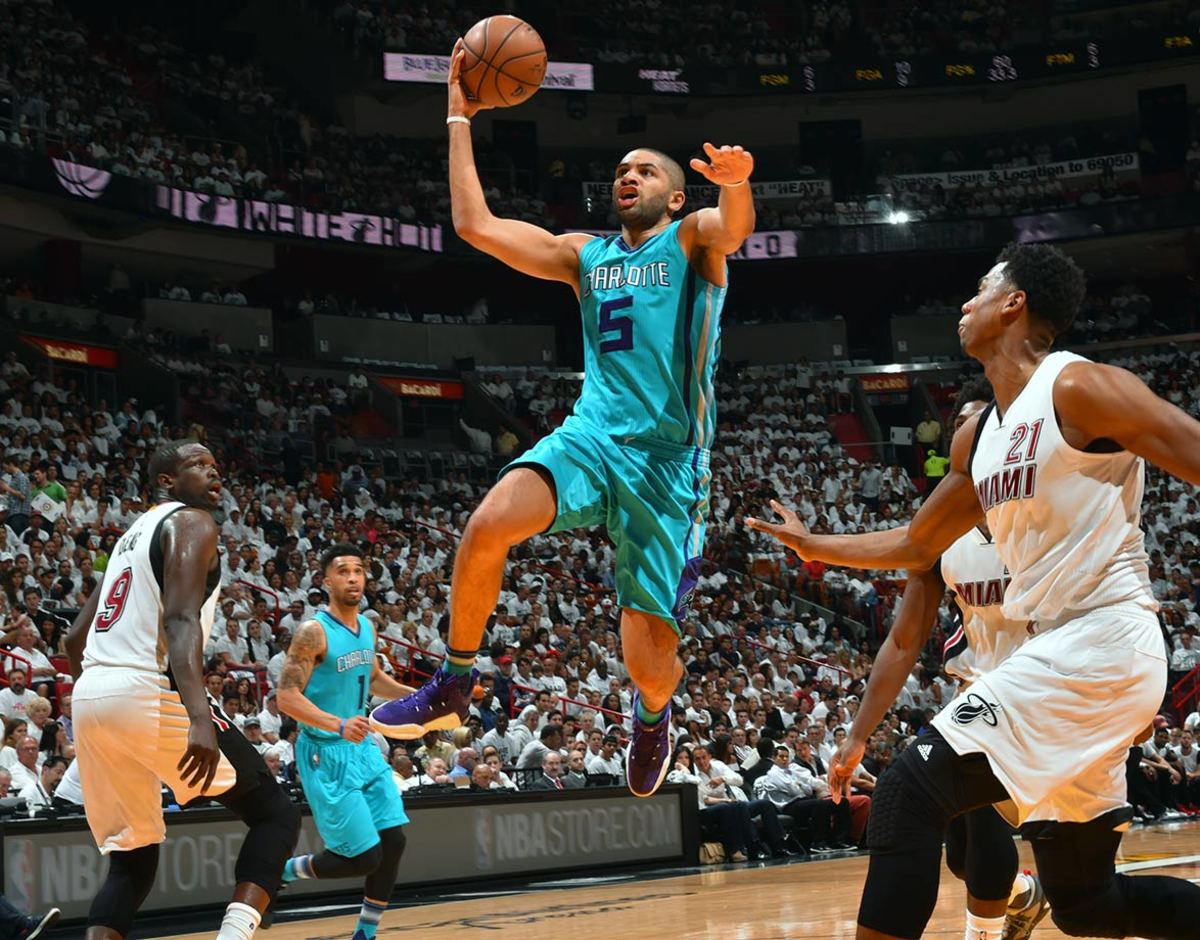
The Hornets dealt away a solid rotation wing (Gerald Henderson) and the No. 9 pick in the 2014 draft (Noah Vonleh) to acquire Batum last summer, confident that his versatile game could round out their playoff candidacy. Charlotte was so right it may now lose Batum to the open market. Signing the 27-year-old forward this summer will likely require the max or an offer close to it. Calibrate your market expectations accordingly. Batum brings smart secondary playmaking to go along with natural scoring, solid defense that builds off his impressive length, and a feel for offense that appeals to NBA coaches. That kind of multi-functional skill won’t be found in free agency this summer, save in the luxury tiers.
10. Dwyane Wade
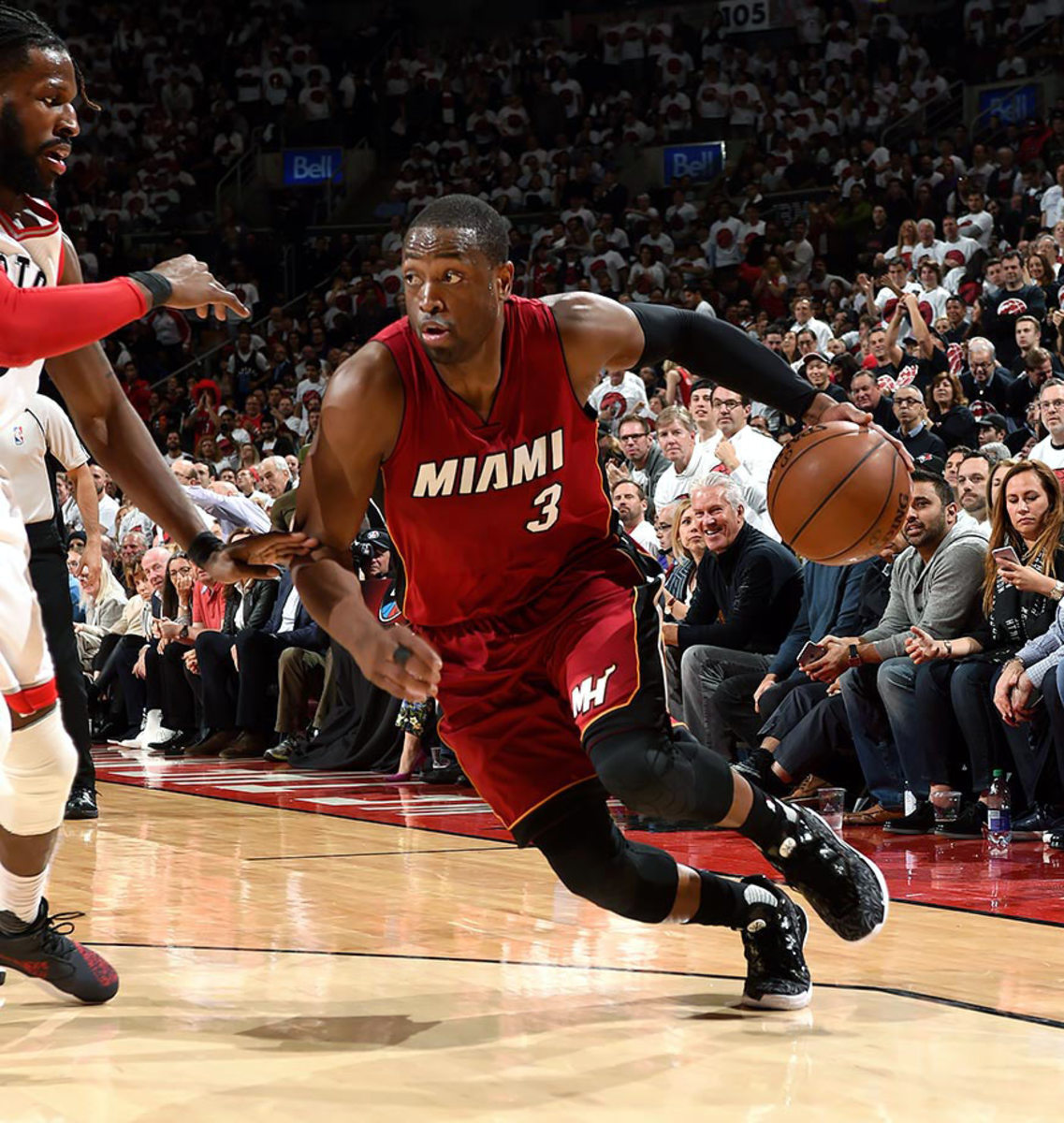
Every contract Wade signs for the remainder of his career will be a race against the clock. For now, the Heat stalwart generates offense at a level worthy of his Hall of Fame career. That could change at some point during the life of his next deal, even if it lasts a single season. Implicit risk must be priced in. Otherwise, suitors should expect familiar riffs on the same basic themes that have made Wade so effective for so long—all stemming from the clever manipulation of defenders. Even after 13 years in the league and three titles, Wade still dupes defenders with pump fakes and creates space where there should be none. That allows him to produce as is needed to outweigh his noncommittal defense and sagging efforts in transition.
11. DeMar DeRozan
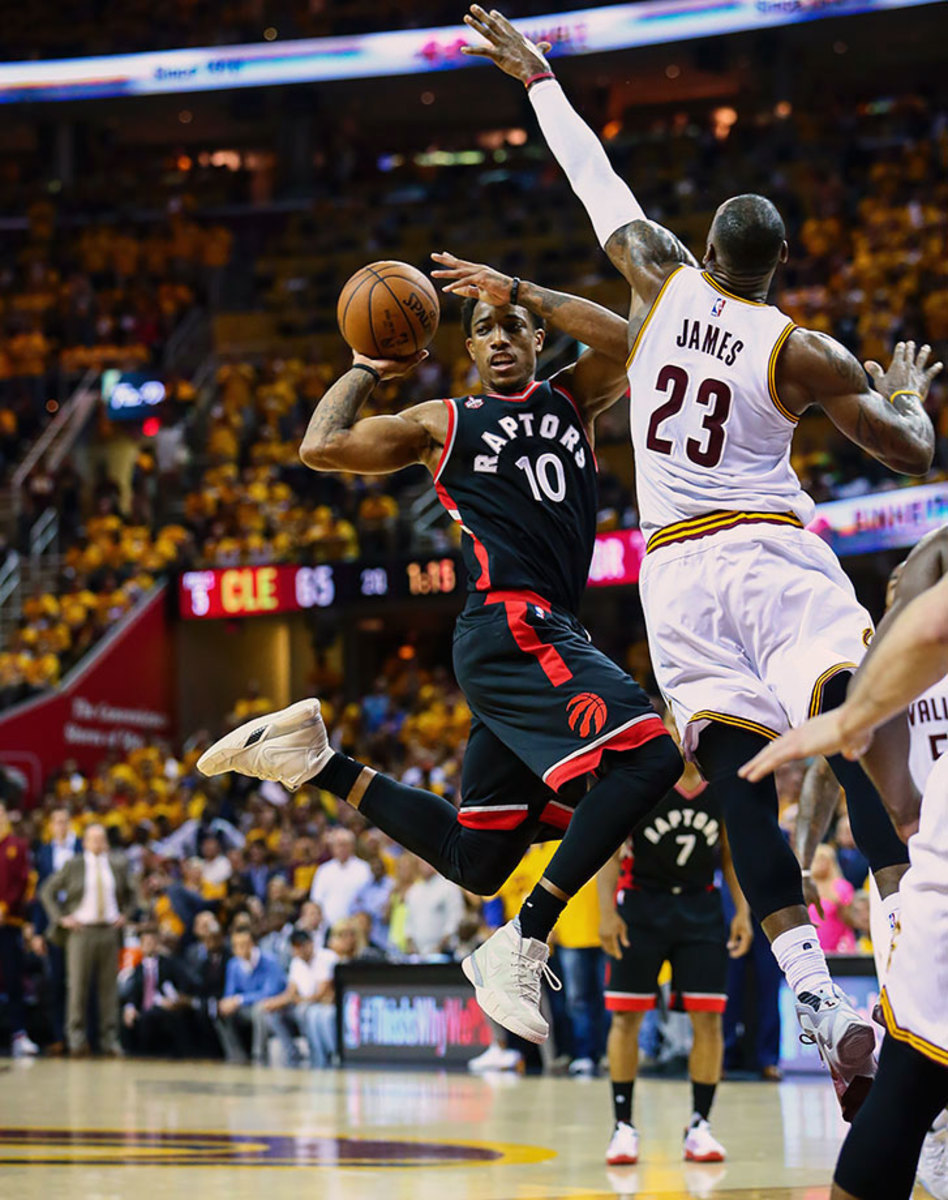
Every team’s mileage will vary with DeRozan given the particular boundaries of his game. Those desperate for scoring and lacking other means of offense would take his 23.5 points per game on 44.6% shooting from the field—much of it manufactured on his own—without much question. What DeRozan offers in that regard has clear value. It also, at a certain level of competition, is boxed in by limitation in a way that tends to create problems. To this point, DeRozan hasn’t shown all that much aptitude as a cutter or spot-up shooter (given his discomfort beyond the arc), which positions him to have the ball in his hands as a matter of necessity.
12. Tim Duncan (player option)
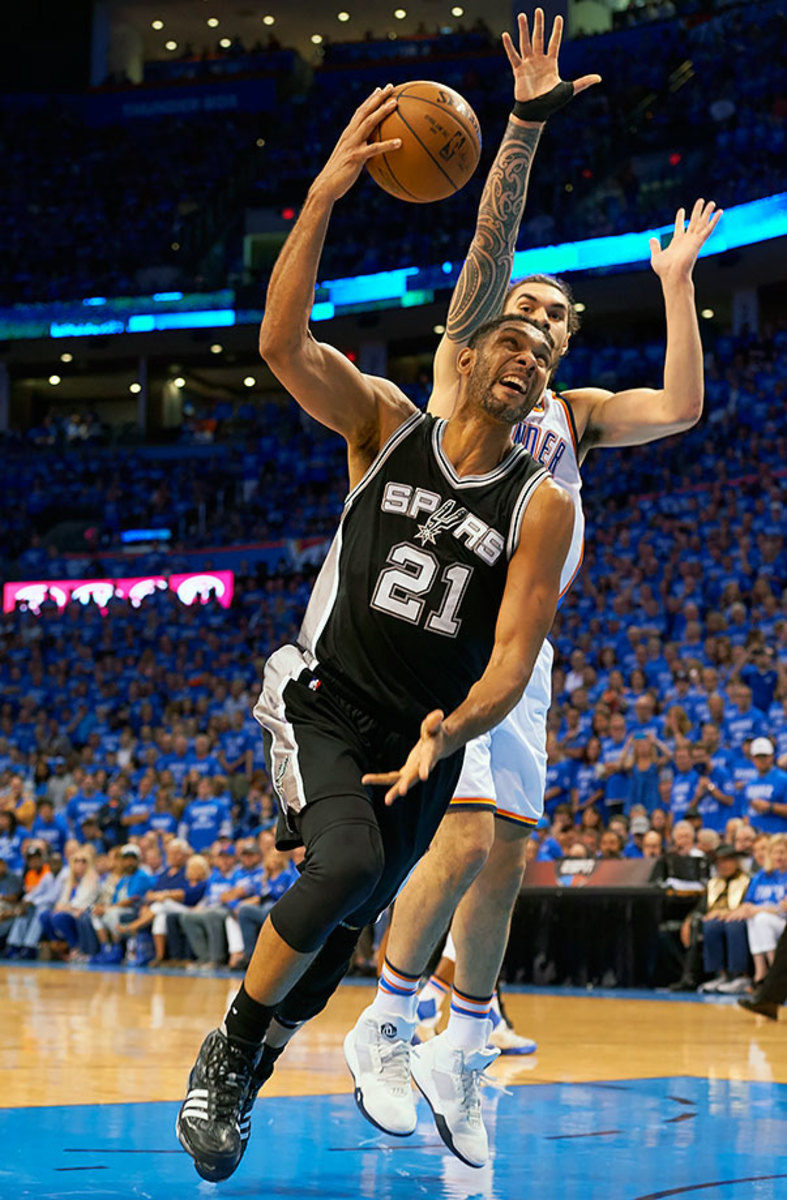
A potential free agent only in technicality. Duncan won’t be leaving San Antonio unless he leaves the league altogether.
13. Dirk Nowitzki
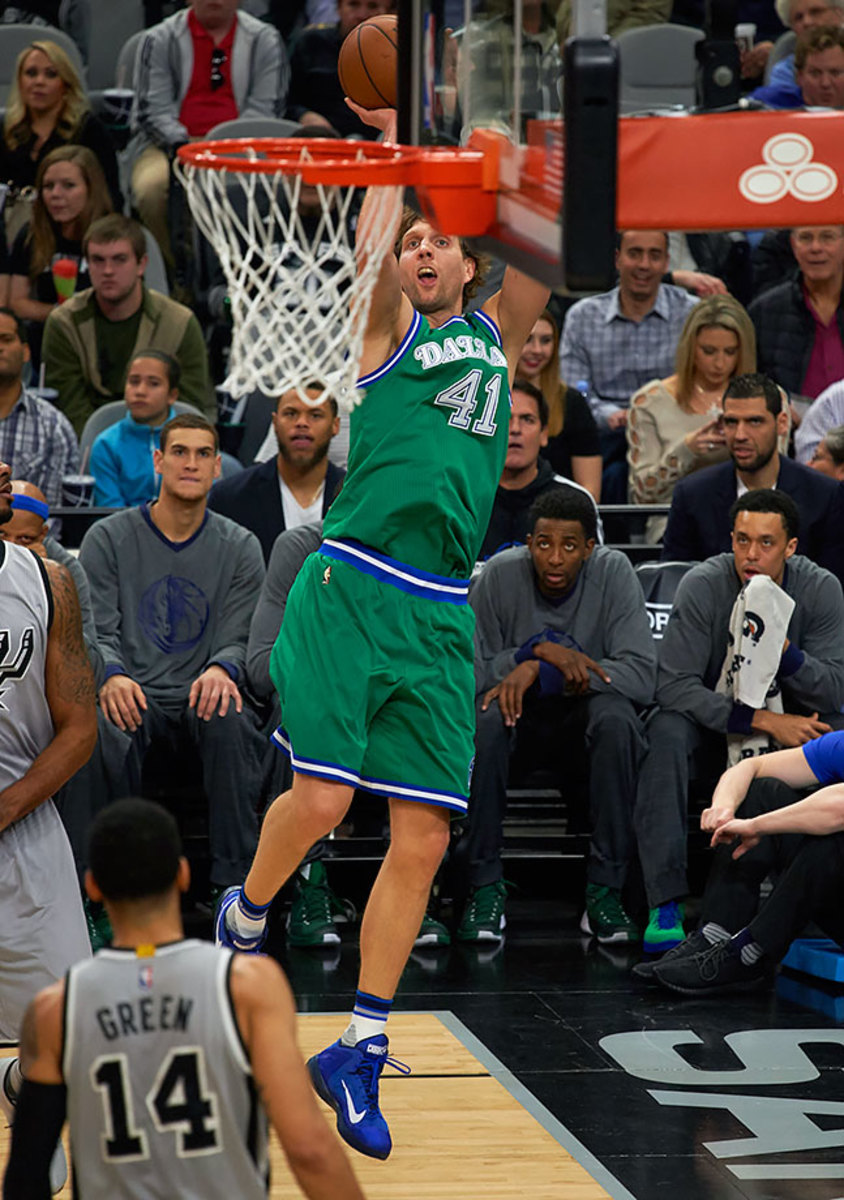
Athough Nowitzki has indicated that he has every intention to stay in Dallas, the fluidity of the Maverick roster leaves the matter open to reconsideration. Other teams will make their case. Nowitzki still delivers as both a shot creator and floor spacer, a dual capacity for offense that could aid many of the league’s contenders. It would be hard to blame Dirk if, in the midst of another reshuffle, he considers another offer and what could be. Still, it would take a special opportunity to budge Dirk from the city and franchise where he’s spent his entire career.
14. Chandler Parsons
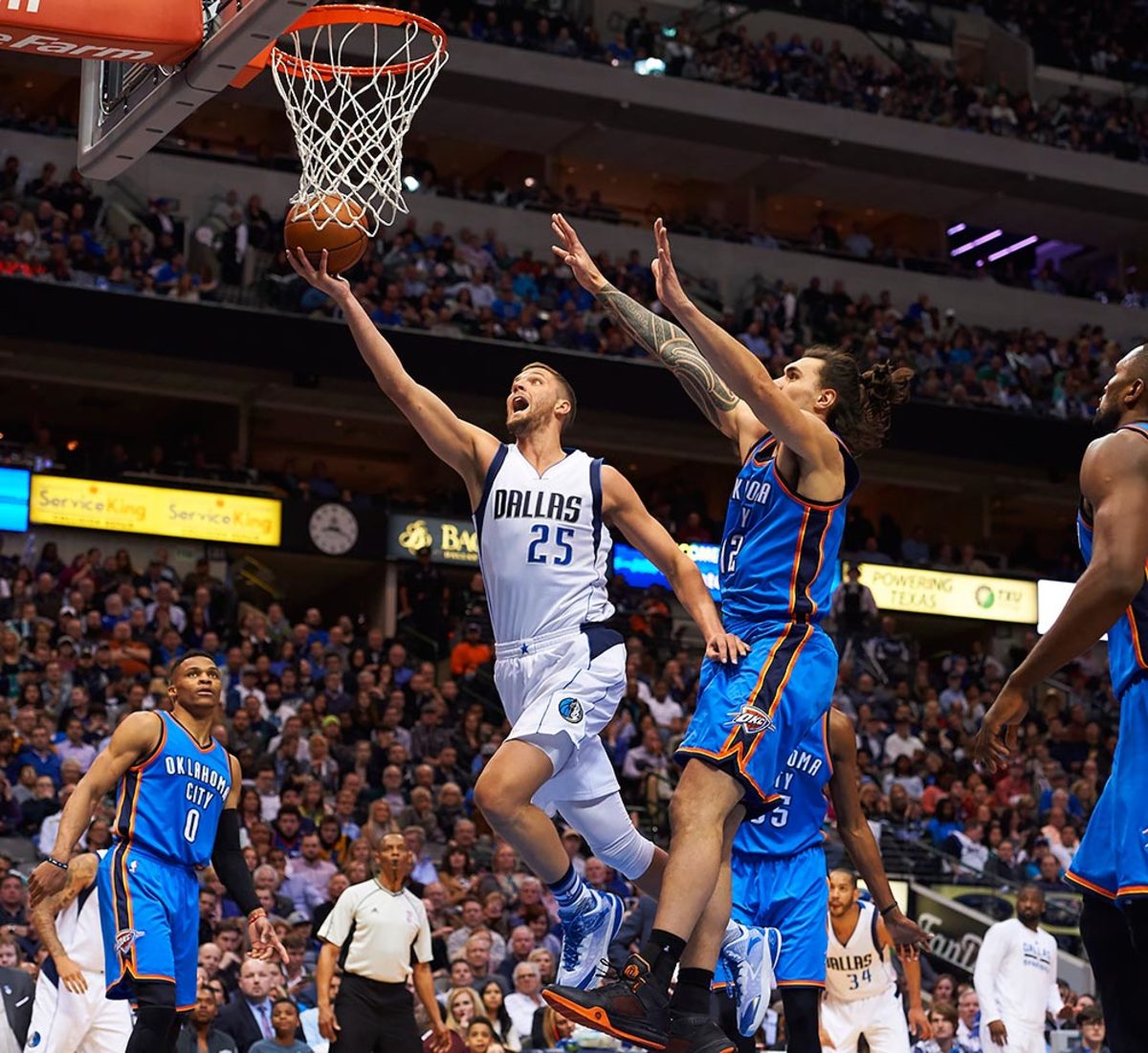
We still haven’t seen Parsons pushed to the full extent of his creative ability. This is a 6'9" forward who can run pick-and-roll more often than he’s been allowed, enable the athletic bigs on his team with lobs, and stutter-step his way into viable off-the-dribble offense. His knees are a legitimate hang-up; Parsons’s last two seasons with the Mavericks were each cut short by knee injuries and surgeries, first a hybrid microfracture procedure and then an arthroscopic procedure to repair his torn meniscus. The latter is decidedly less severe, though not without some cause for concern in Parsons’ broader injury history.
15. Pau Gasol
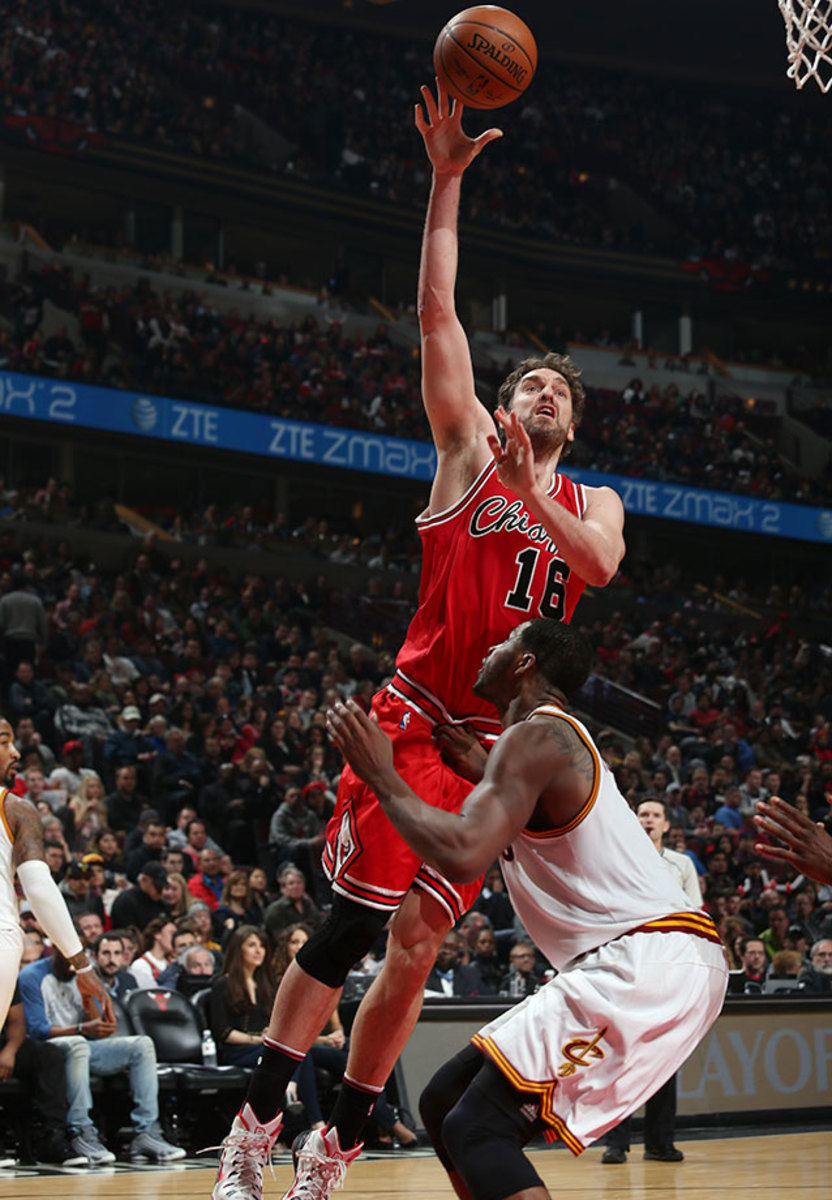
Gasol has earned the right to be particular. He wants to be involved in the basic operations of an offense and has the game, as a scorer and passer, to support the notion. Few can do what Gasol can, and virtually none in the history of the game have produced in the same way at his age (35). To this point, Gasol has expressed no interest in coming off the bench, even when it might serve his team’s best interests. Market matters to him because cultural life beyond the floor matters to him.
16. Bismack Biyombo
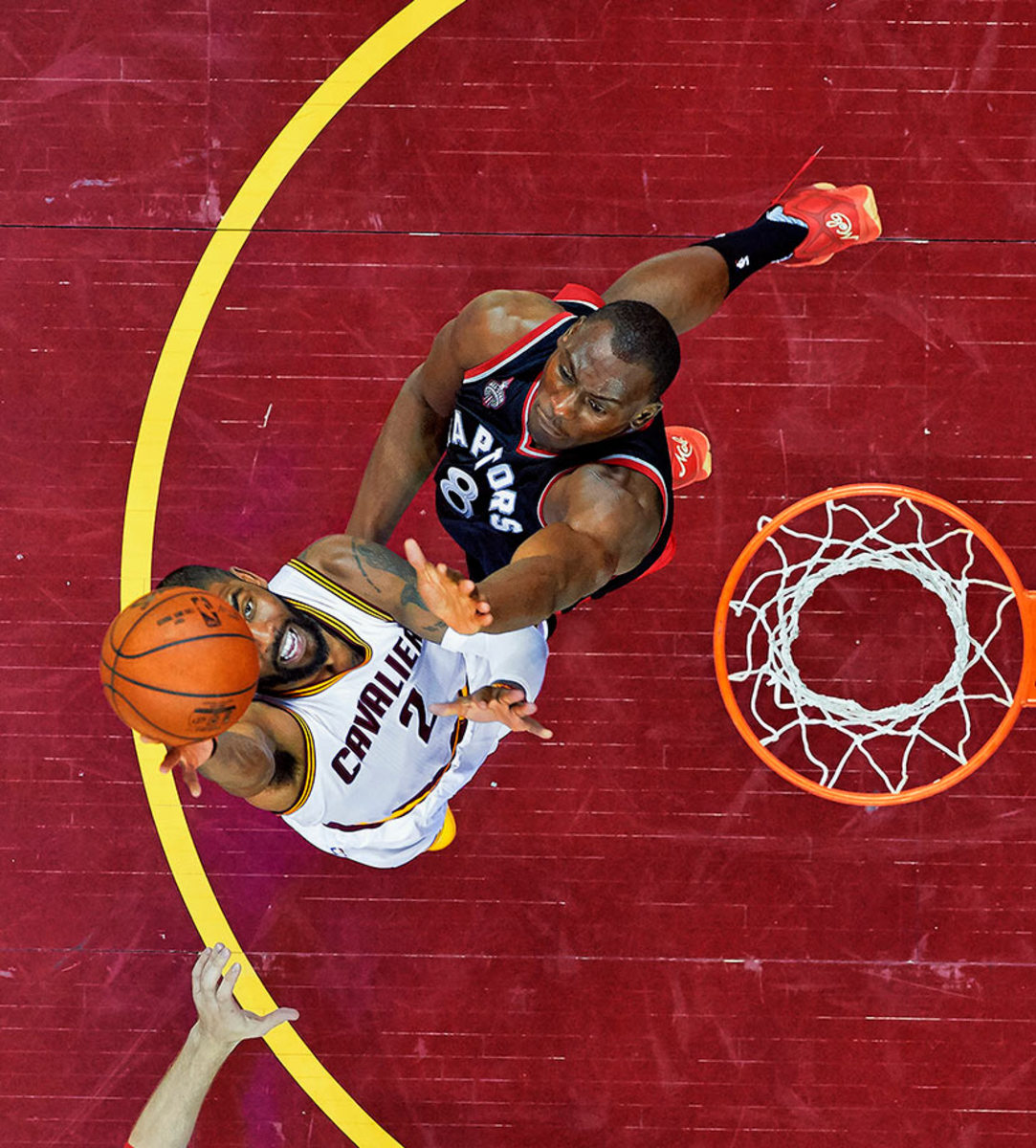
A productive scoring night for Biyombo might feature three or four field goals, all created by others, with minimal turnovers. There isn’t much to be gained by his play on that end, or even his planned involvement. Where Biyombo aids a team’s cause is in the physicality of the game elsewhere. Few bigs will chase rebounds so relentlessly, guard the rim so tenaciously, and set screens so forcefully. His energy alone extended Toronto’s postseason life, demonstrating in the process that even playoff teams might not have much answer for all he provides. Matchups that pull Biyombo away from the rim on defense can mitigate his value (exacerbating the fact that he’s already a one-way player), though none can subdue it completely. No viable player in this free agent class is so obviously limited and yet effective.
17. Ian Mahinmi
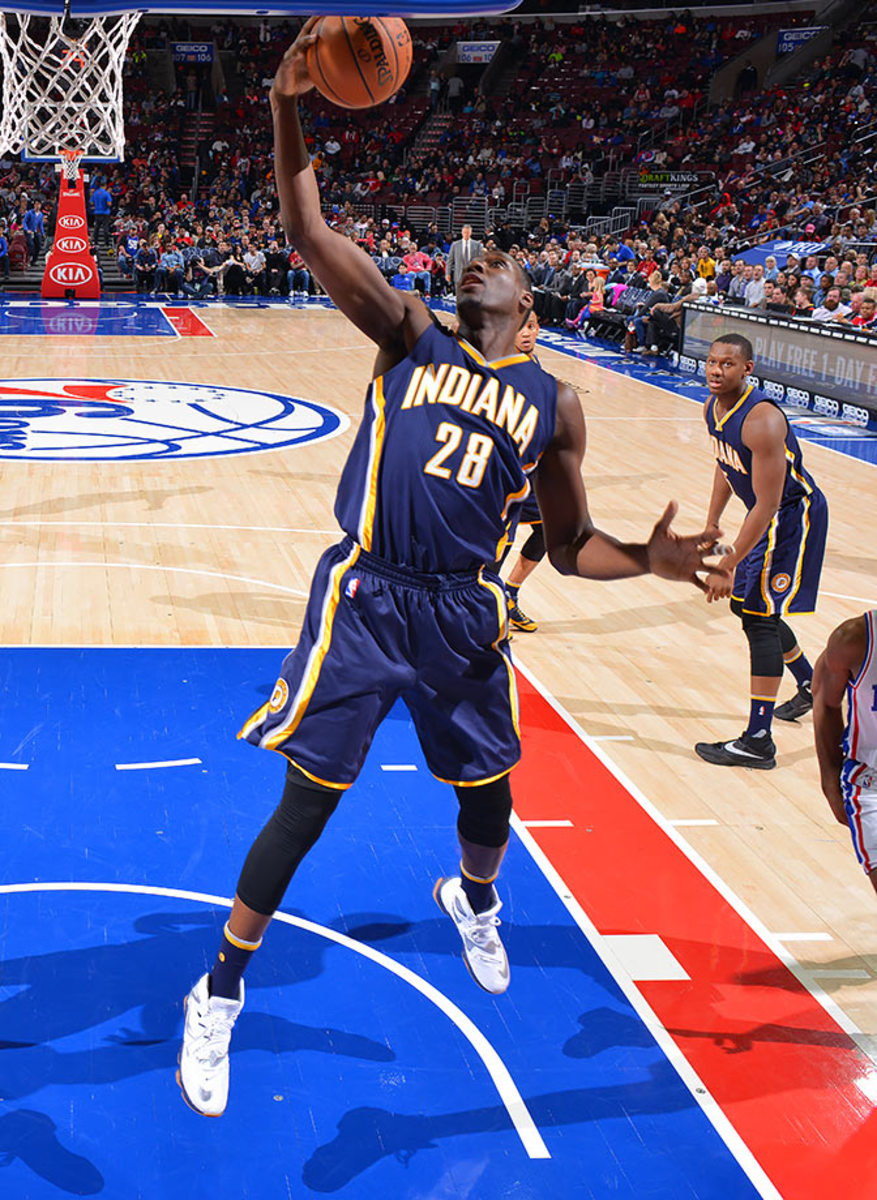
The arc of Ian Mahinmi is a nine-year journey from D-League-assigned project to starting-caliber center. Last season he provided the backbone of the third-best defense in the league while posting a double-double (13.1 points, 10.1 rebounds) per 36 minutes. The consistent foul trouble that once artificially curbed Mahinmi’s playing time has also been made manageable as he’s learned subtler ways of challenging shots and influencing opponents with a live dribble. All of that, coupled with a fascinating new poise in making decisions on the move, makes Mahinmi a prospective addition of impressive value. A team could do much worse than relying on Mahinmi to steady its defense and keep opponents honest in rotation for 30 minutes a night.
18. Festus Ezeli (restricted)
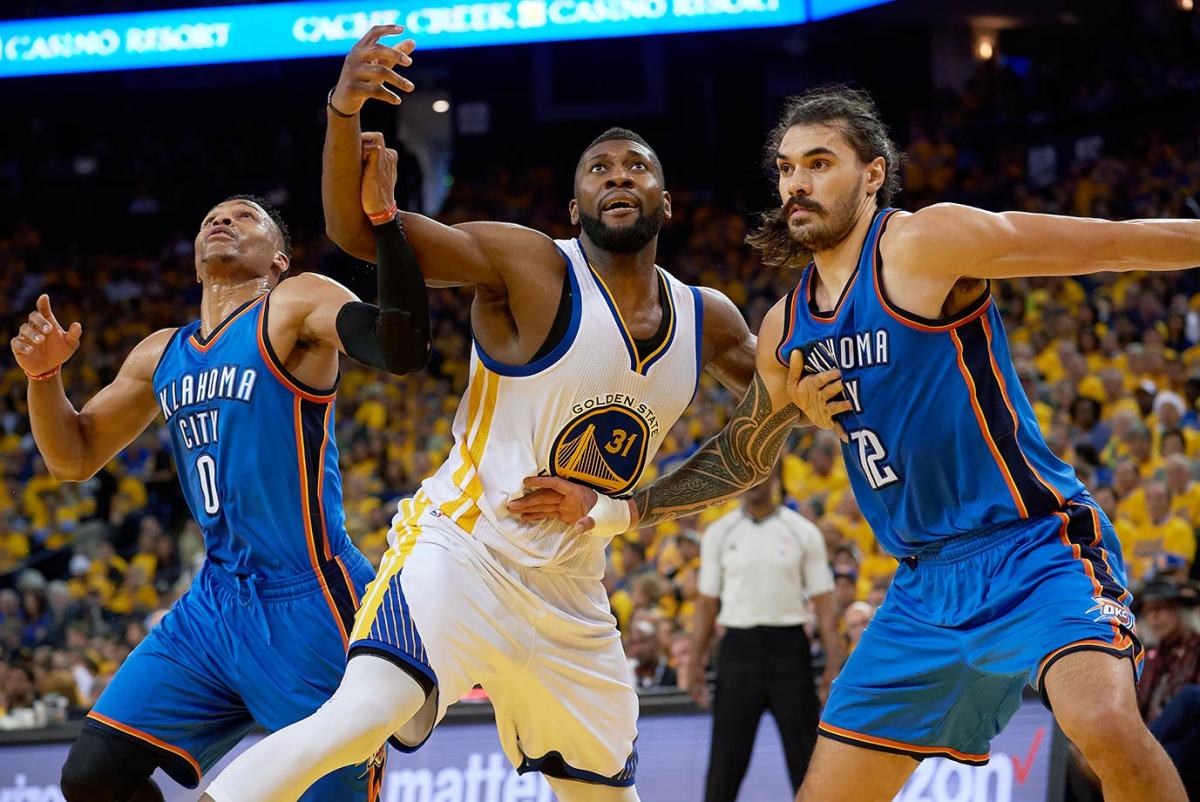
Ezeli’s time with the Warriors had run its course, as evidence by Steve Kerr’s uncommonly low tolerance for any of the center’s mistakes. To be fair, there are many; Ezeli can be an effective defender if not always the most technically sound, tends to see any touch within 15 feet as an invitation to attempt a hook shot, and can space out on his responsibilities on both ends at times. Even still he has the size and mobility to make a difference, particularly now that he’s able to actually catch the ball and make an occasional move in traffic. Ezeli might not always do what his coaches want him to, but he’s one of the few bigs available who can scurry out to the perimeter to contain a pick-and-roll, swat away shots at the rim, and hold his own against physical centers on the glass.
19. Ryan Anderson
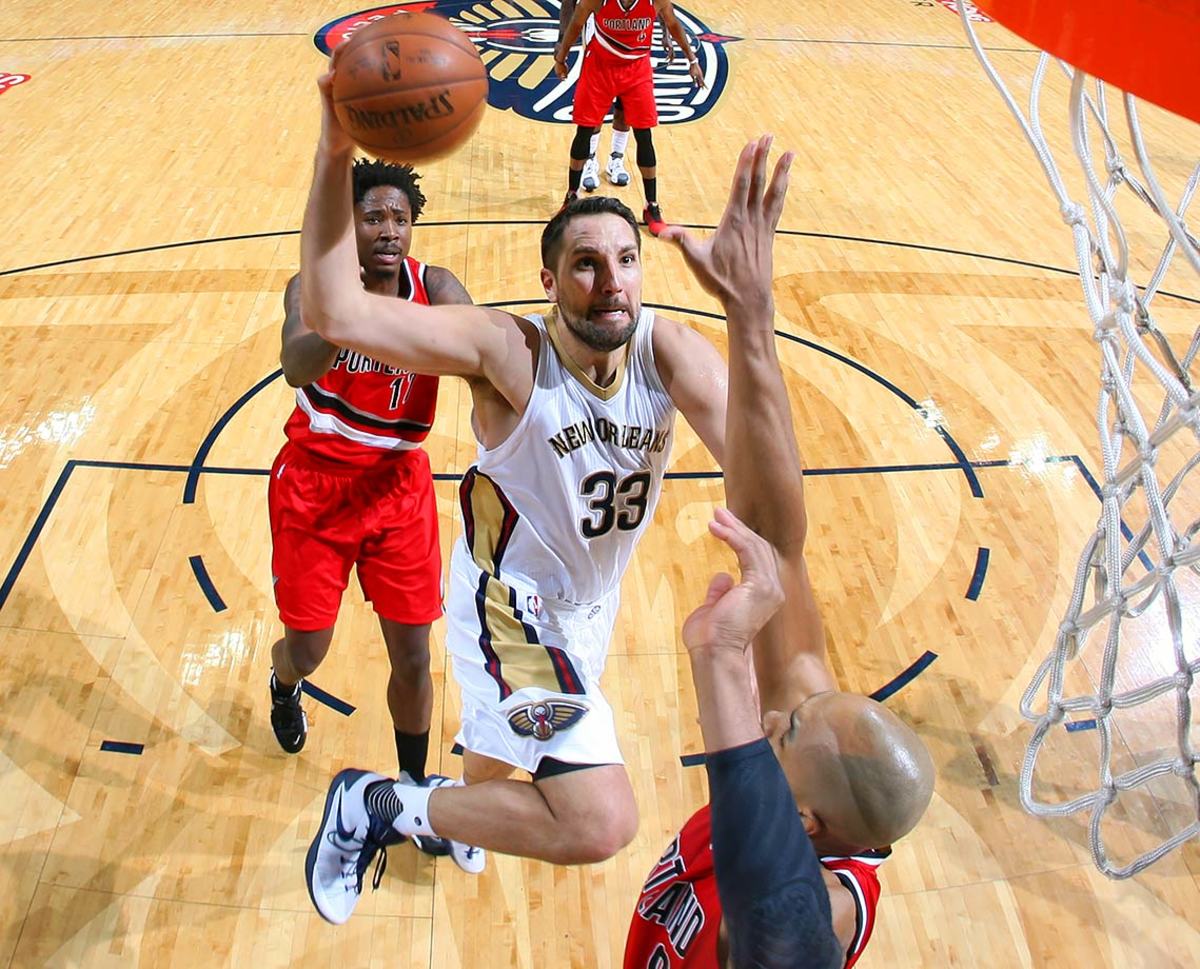
Shooters like Anderson demand respect, which in itself allows his teams to operate from a position of some advantage. Dedicating a defender to guard him closely can compromise an opponent’s rotations. Looking to contain him through a more straightforward system of help and recover will inevitably ask some frantic defender to run out to the three-point line to contest his high release. Anderson has proven he can hit those shots, though the rest of his game requires a team built to mask his flaws. Opponents have found success switching smaller defenders on to Anderson and lived with his forays into the post. Others have taken advantage of his lacking defense or used his matchup to attack the glass.
20. Marvin Williams
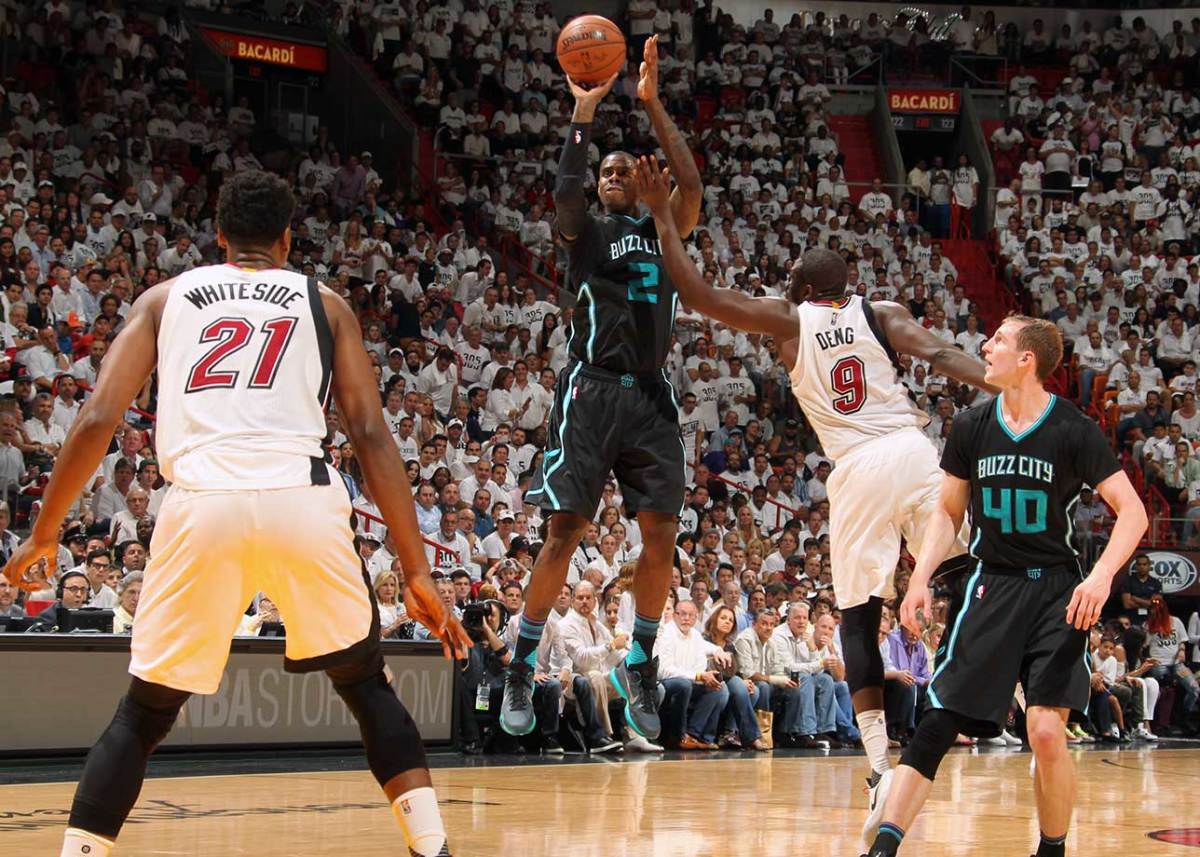
Over the course of two seasons, Williams remade himself into the player the Hornets needed: a flexible, stretchy forward who could punish opponents from the perimeter (40.2%), put the ball on the floor to attack a closeout, guard opponents at the three or the four, and offer reliable help in rotation. This is the profile of a high-impact player, even if Williams might not be known to many basketball fans outside of the unceremoniously quiet start to his career. Williams is a different player now, and one who stands to be rewarded handsomely for the utility he’s created for himself.
21. Al Jefferson
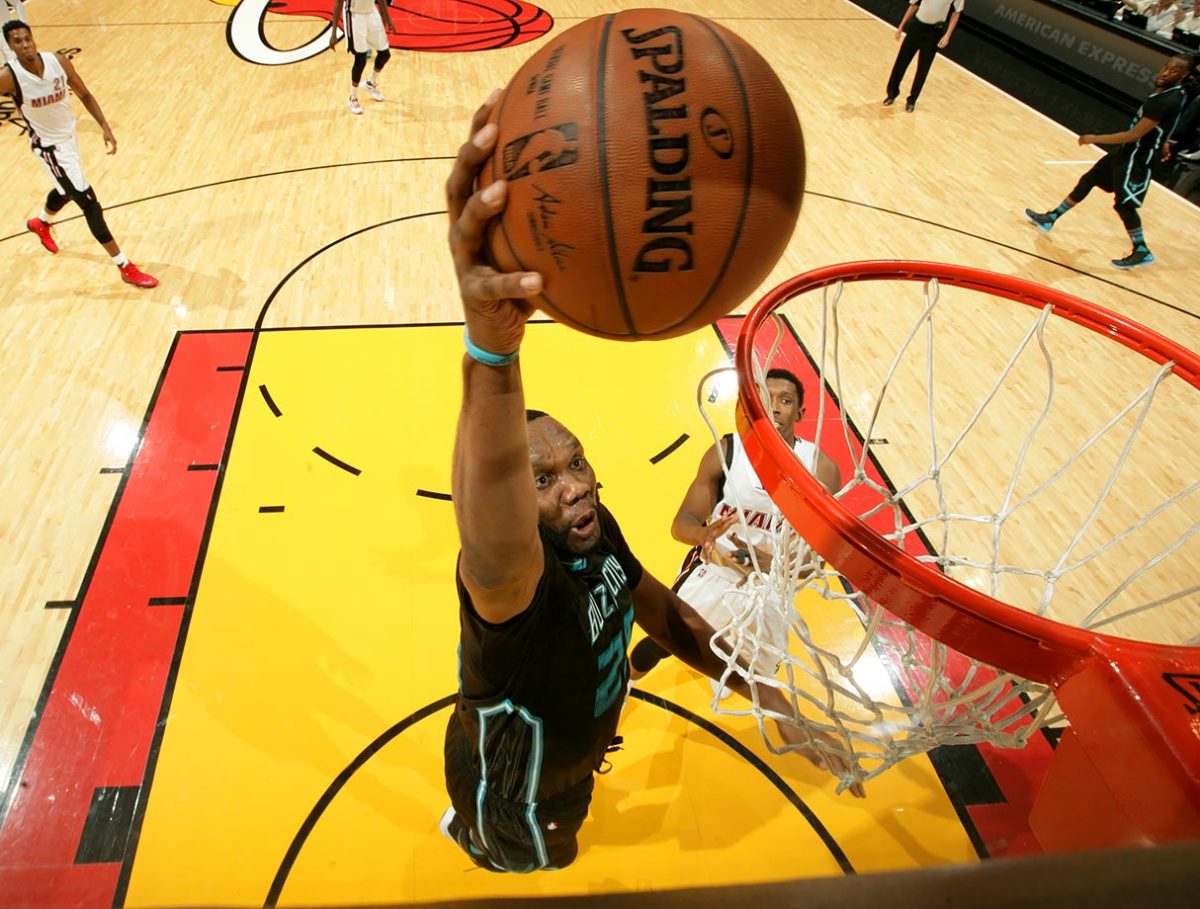
One of the best post scorers in the NBA will likely face a bearish market. Jefferson doesn’t much align with the vision of a modern NBA center. His offense requires possession of the ball but doesn’t generate much for others. The very nature of operating through the post makes an offense predictable and dependent on optimal spacing to reach even moderate efficiency. Defensively, Jefferson can survive when playing back and clogging up the lane but has no chance containing quicker players on the perimeter. Even as a rebounder Jefferson is merely solid—not at all a problem, but a few degrees removed from the statistical elite.
22. Harrison Barnes (restricted)
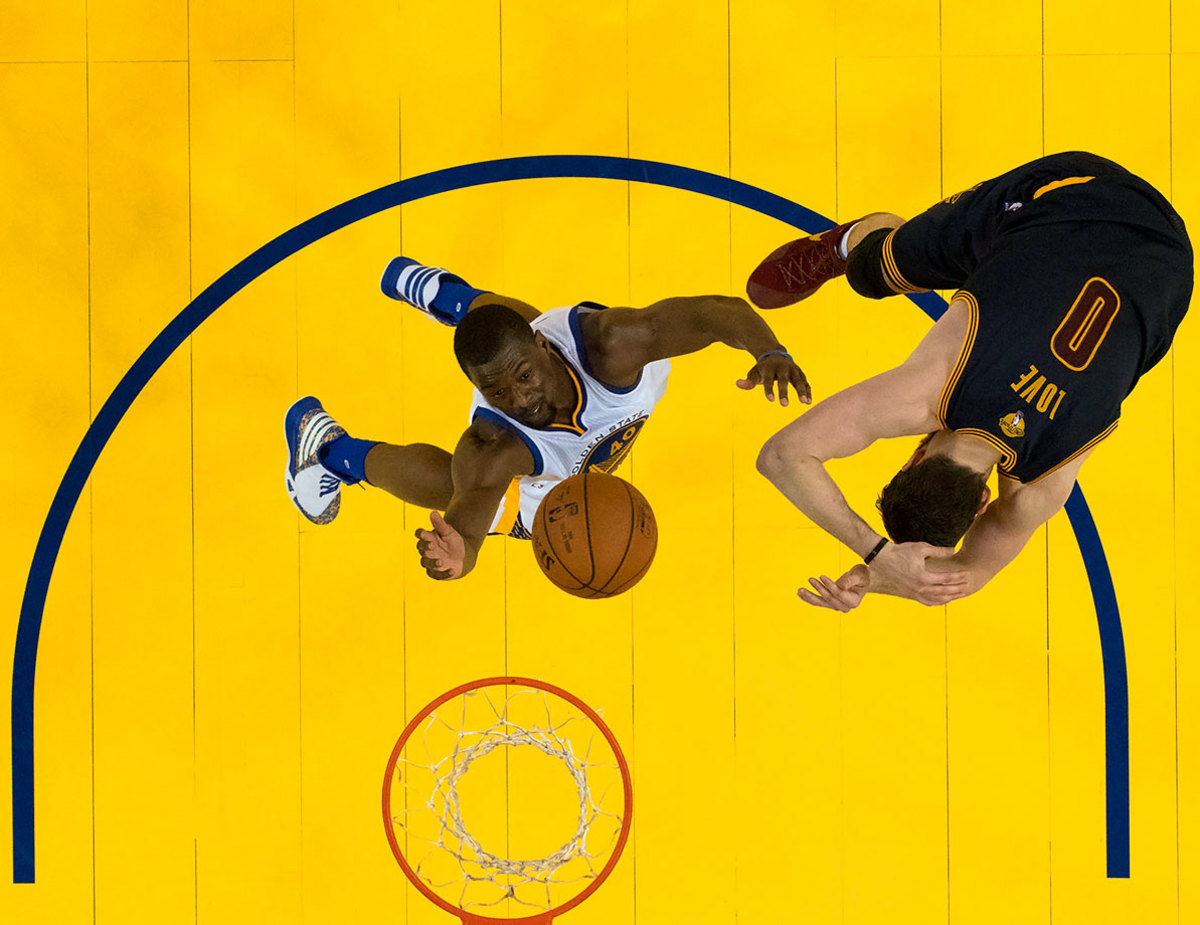
Dispense with the notion that Barnes is a star in waiting. His role with the Warriors is that for which he’s best equipped: walking the line between forward positions by stretching bigs out to the perimeter, posting up smaller wings, and guarding both effectively. There is no explosive potential lurking beneath the surface of a 24-year-old who struggles off the dribble. Barnes is who he is, and that player just so happened to key the 2015 title run and a near repeat in 2016.
23. Kent Bazemore
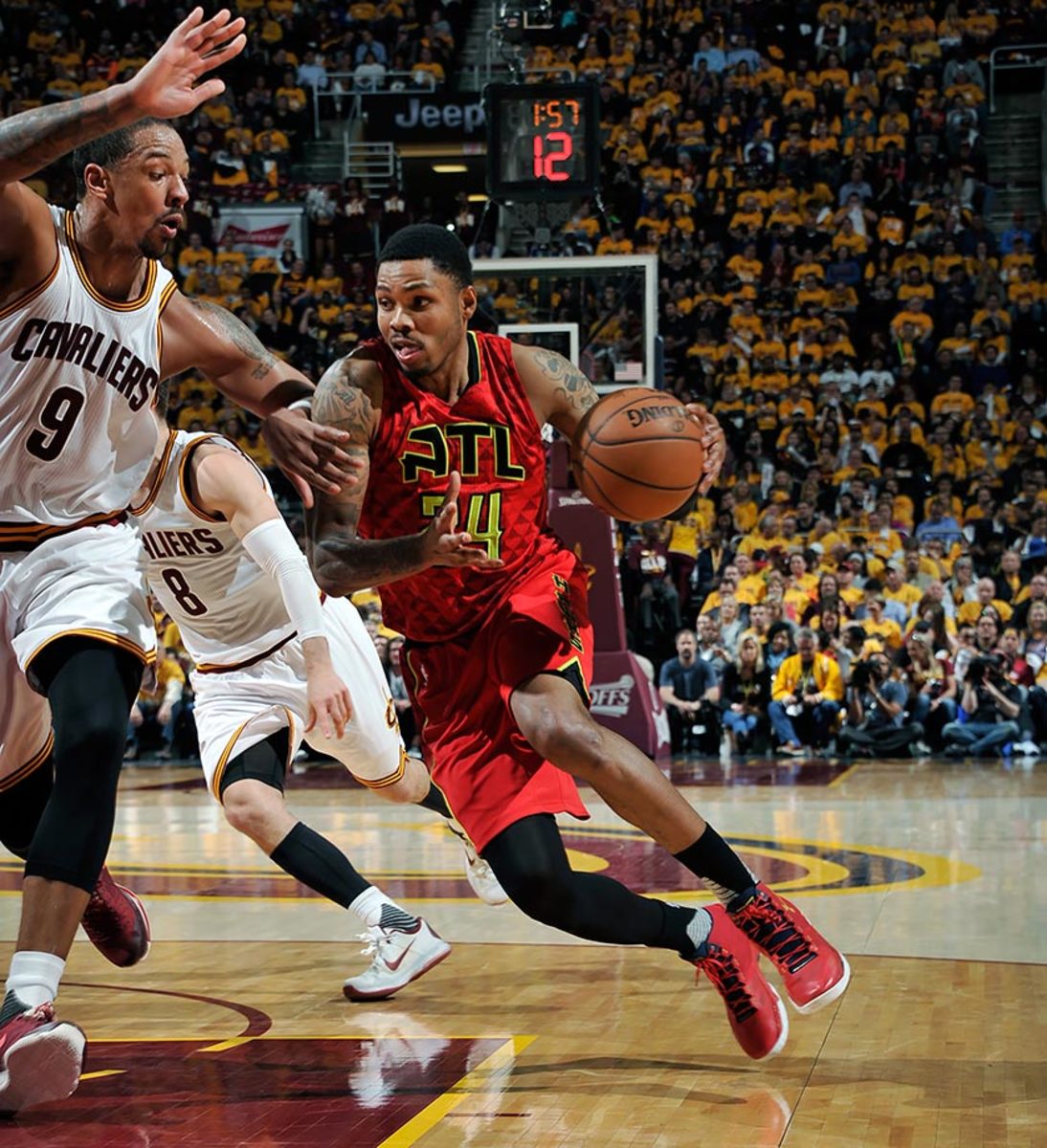
Atlanta cultivated Bazemore’s live-wire energy into a real, starting-caliber product. Many NBA teams could plug Bazemore into a complementary role and thrive with his bounce. Players who cut in bursts like he does and explode out into transition tend to catch a defense off-guard. Quickness and length allow him to cover ground more quickly than most opponents are accustomed to, even if Bazemore himself can sometimes space on his defensive fundamentals. Everything he does comes from an intersection of pep and discipline. Mike Budenholzer and his staff did all they could to rein in Bazemore without taking away the zip that makes him effective. They succeeded to the point that Bazemore became one of the most improved players in the league.
24. Evan Fournier (restricted)
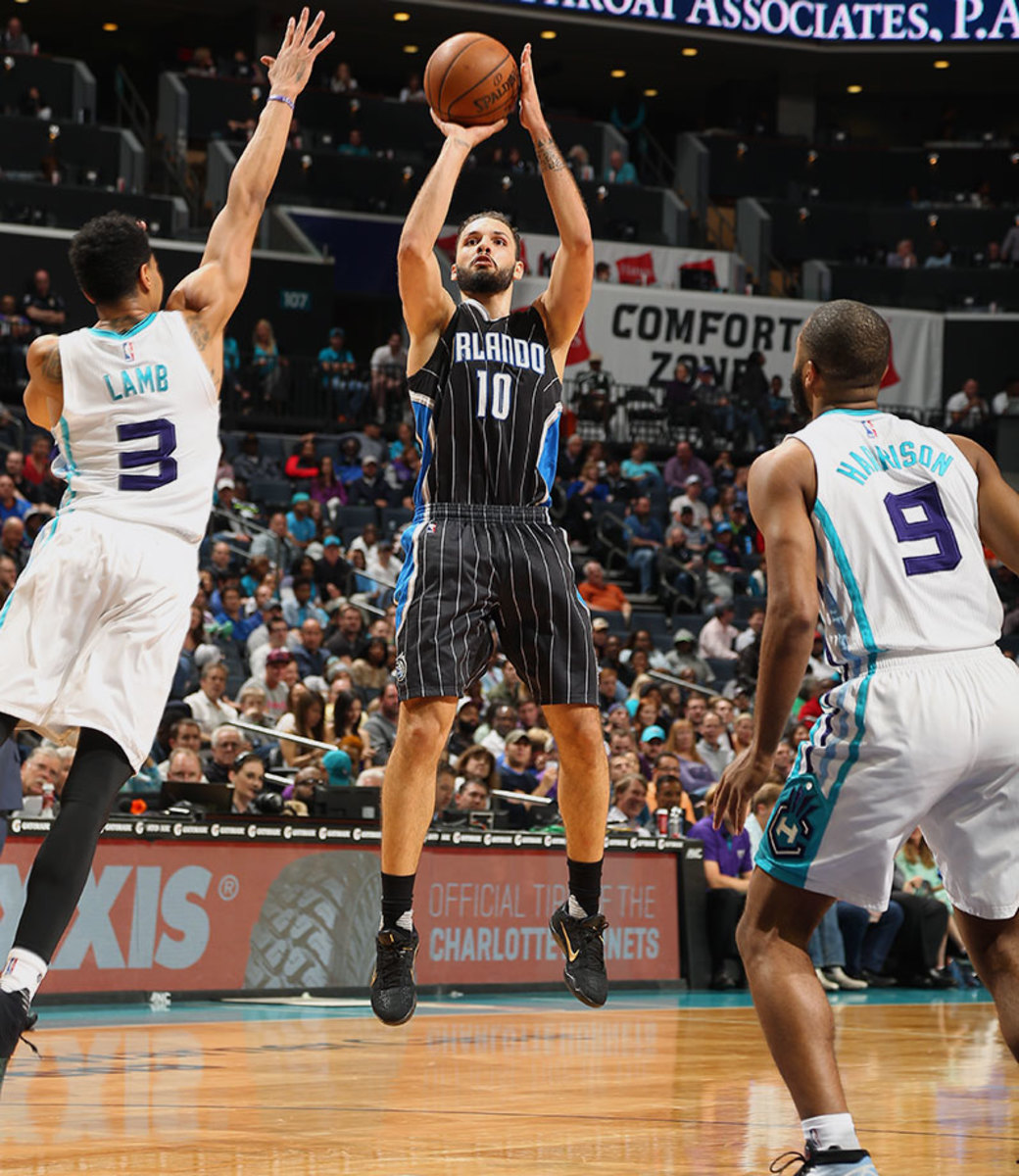
The league-wide need for quality wings could benefit players like Fournier most of all. Fournier can play. Putting the ball in his hands can spell an offense for minutes at a time, whether asked to create off the bounce himself or play off of his teammates. There’s a gutsiness to the way Fournier creates under pressure that bodes well for his performance in more competitive environments. That alone will make him an attractive free agent—as will a consistent three-point stroke that allows him to slide into a starting lineup alongside other high-quality players.
25. J.R. Smith
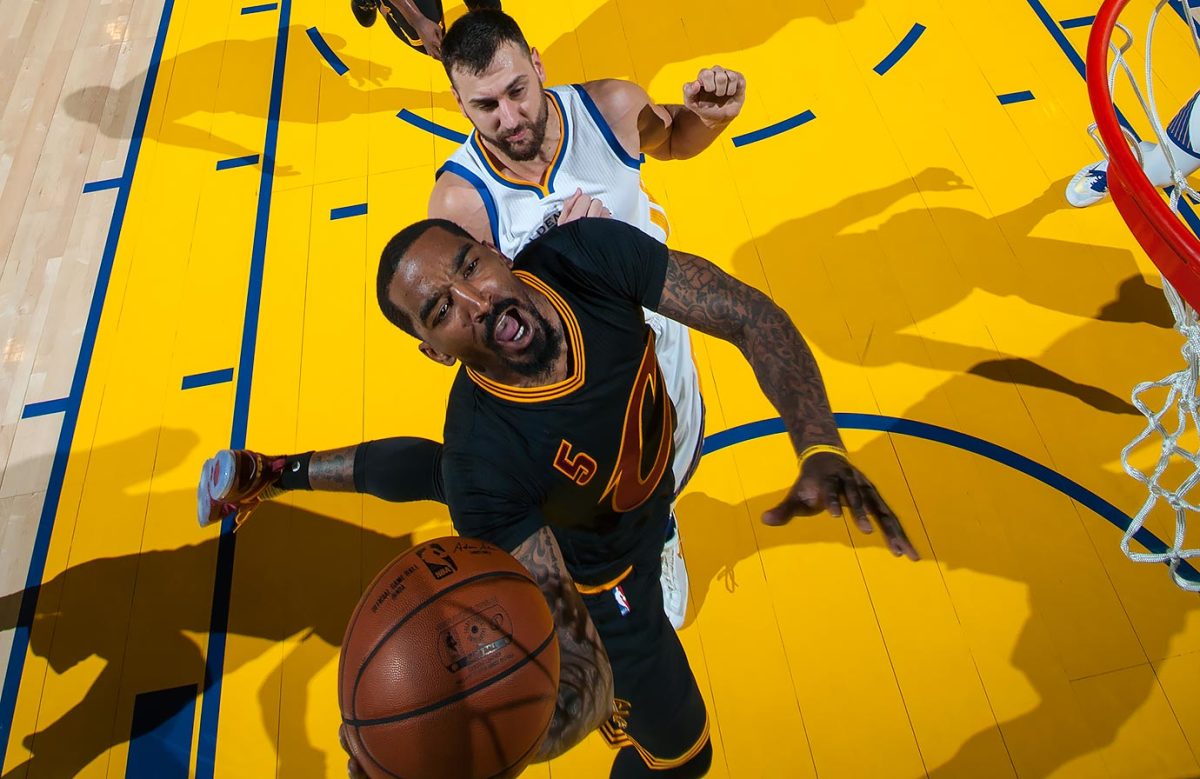
Make that ’NBA Champion J.R. Smith.’ Cleveland has the inside track on signing Smith after making better, more controlled use of his talents than any team had previously. Any other contender that can make a similar pitch should do so; the headaches that arise from employing Smith can be justified by his hot streaks. A single 8–0 scoring from Smith in Game 7 of the NBA Finals may well have determined the NBA champion. His 20 points in Game 3 were a bellwether. It’s a great help to have an All-NBA caliber shooter around who can launch smooth jumpers no matter if his footing is perfect or the pass lands in his shooting pocket. Smith can be streaky, but there’s no replacement for those who can return points—especially three-pointers—from a suboptimal setup.
26. Courtney Lee
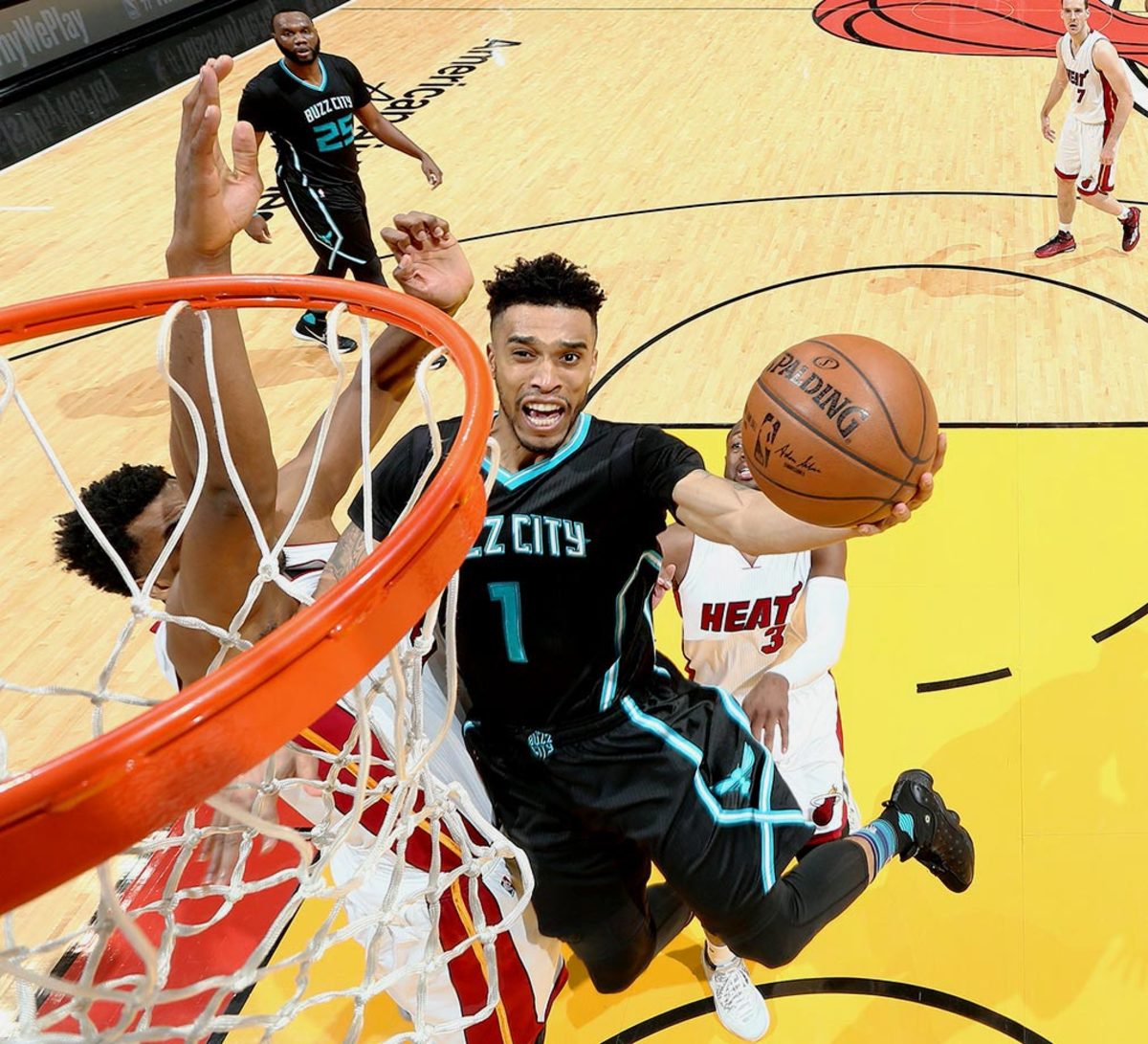
There may be no more important quality for an NBA role player than understanding where to be on the floor. Lee, 31, grasps the concept beautifully. Only a handful of players better time their cuts, and few among them will also glide around the arc to present as a shooting threat. Lee might come to the ball if his teammate is in a pinch or dart backdoor if the defense grows too eager. His defense is assertive—particularly against opposing ball handlers—but rarely puts his teammates in a bad spot.
27. Jordan Clarkson (restricted)
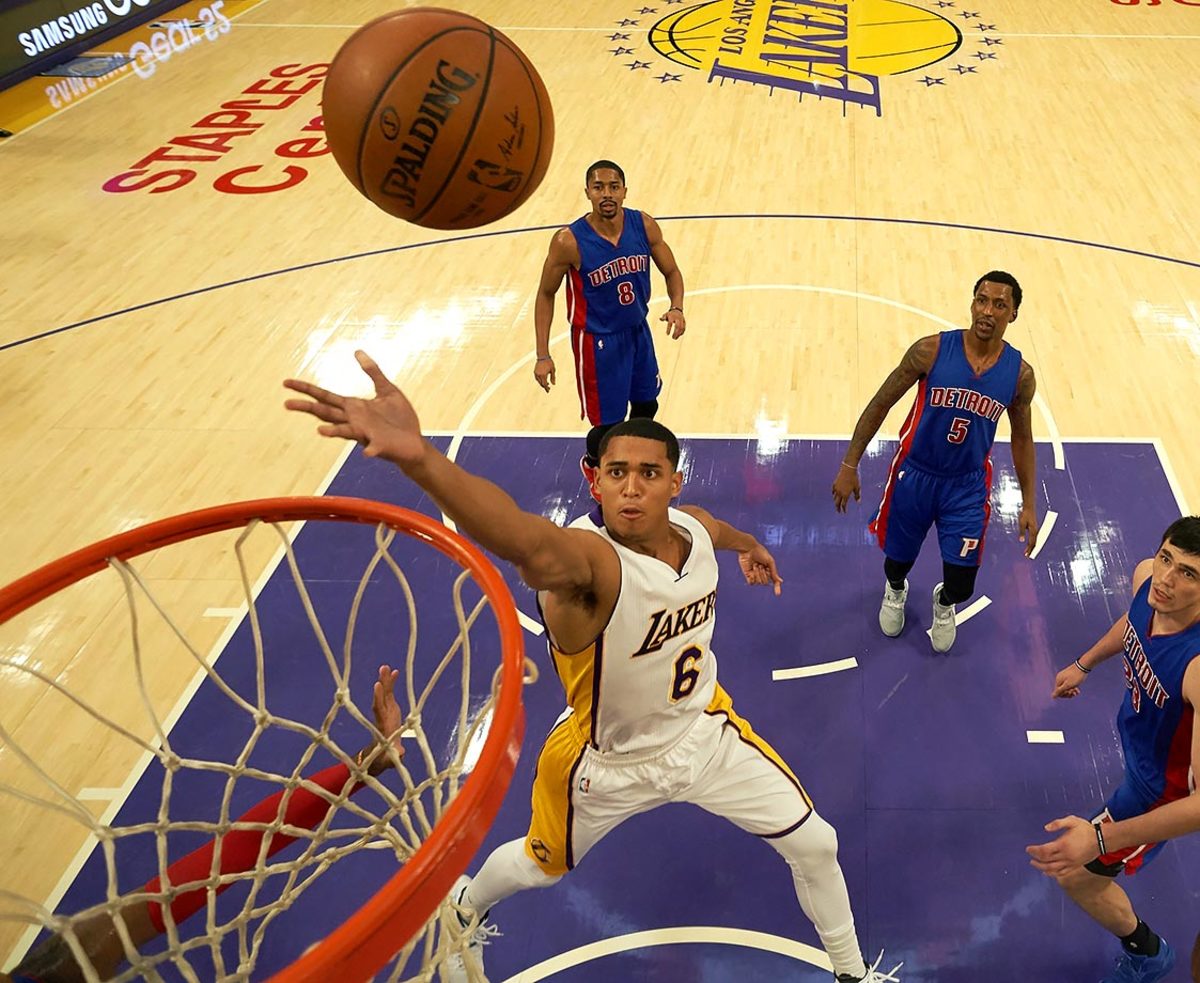
The question of how Clarkson’s talents might be best utilized really comes secondary to acknowledgement of his impressive all-around scoring game. Clarkson’s skills are rather polished for a rising NBA junior—perhaps in part due to his being 24 years old—regardless of whether he’s running the point or working alongside another playmaker. Any smart team would have him do both; Clarkson aims to score by default, but there’s enough awareness to his game to create when the situation allows.
28. Luol Deng
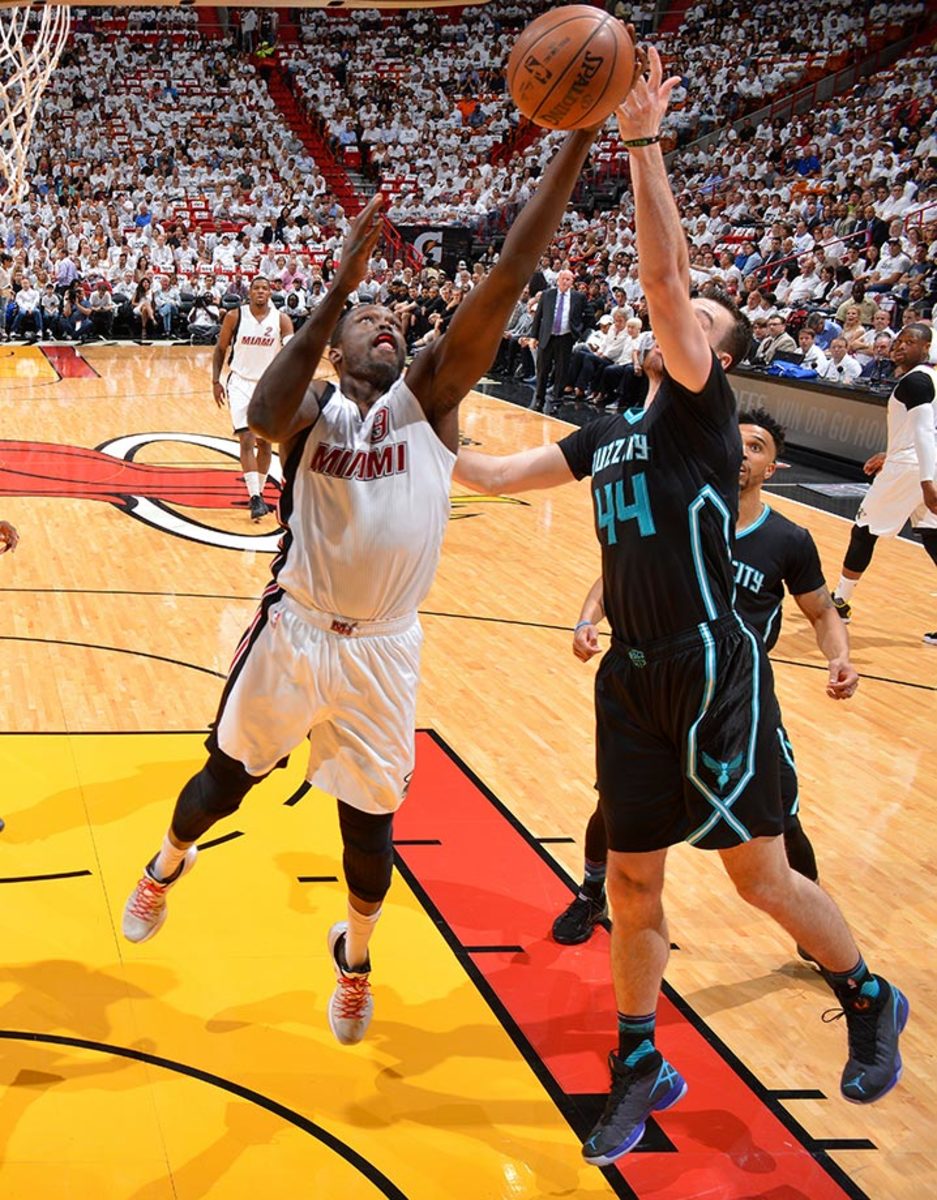
While no longer one of the NBA’s top perimeter defenders, Deng still dedicates himself to his matchup and is discerning enough to take the best angles to help his cause. Length, too, goes a long way; a 6'9" forward with a wingspan like Deng’s makes switching a more viable defensive strategy and small ball less of a size concession. Coaches appreciate that, regardless of his role, Deng knows what he’s doing; it’s not just experience that matters, but the kind of baseline knowledge that allows players to understand the goals of a particular approach and act accordingly. Many can operate to the letter of a coach’s instruction. Veterans like Deng better understand when the principles of a system should apply and how—allowing for intuitive adjustment in the thick of a possession.
29. Evan Turner
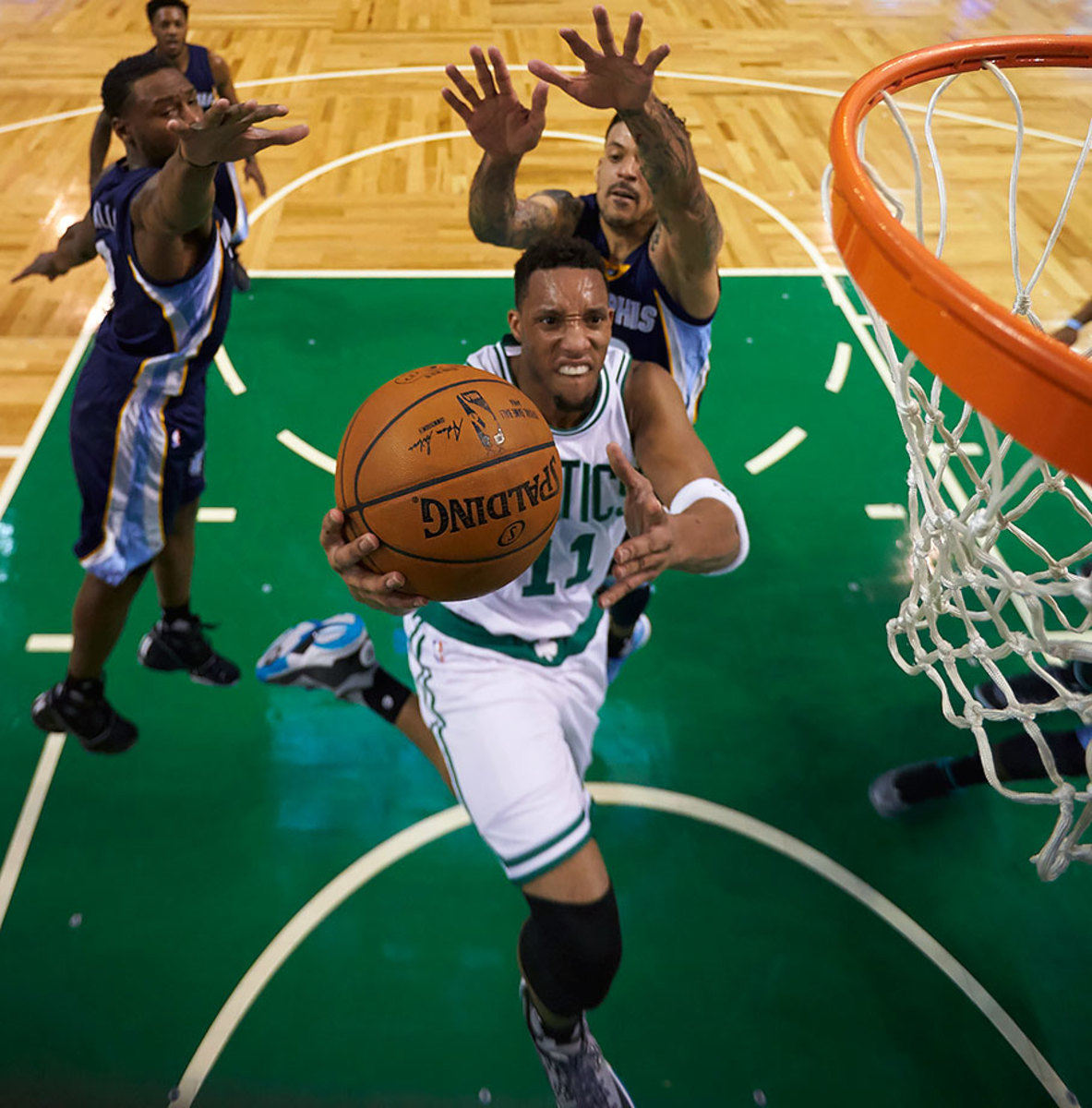
Versatility doesn’t only come into play when filling out a roster or constructing lineups. It’s a factor on every possession that goes awry, and it’s in those scenarios that Turner seems to thrive. Need a random post-up against a mismatched guard? Turner’s your guy. Need to trigger a quick pick-and-roll but the point guard is on the far side of the floor? Turner is perfect for the job. Need a wing to drive off a kick-out to keep the defense compromised before setting up an open teammate? Turner can handle the task, easy. The same goes for spot rebounding, scrambling defense, and so much more. It’s hard to define on a possession-to-possession basis what Turner might end up contributing, though on balance his wide-ranging game yielded 13.5 points, 5.7 assists, and 6.3 rebounds off the bench last season.
30. Jeremy Lin
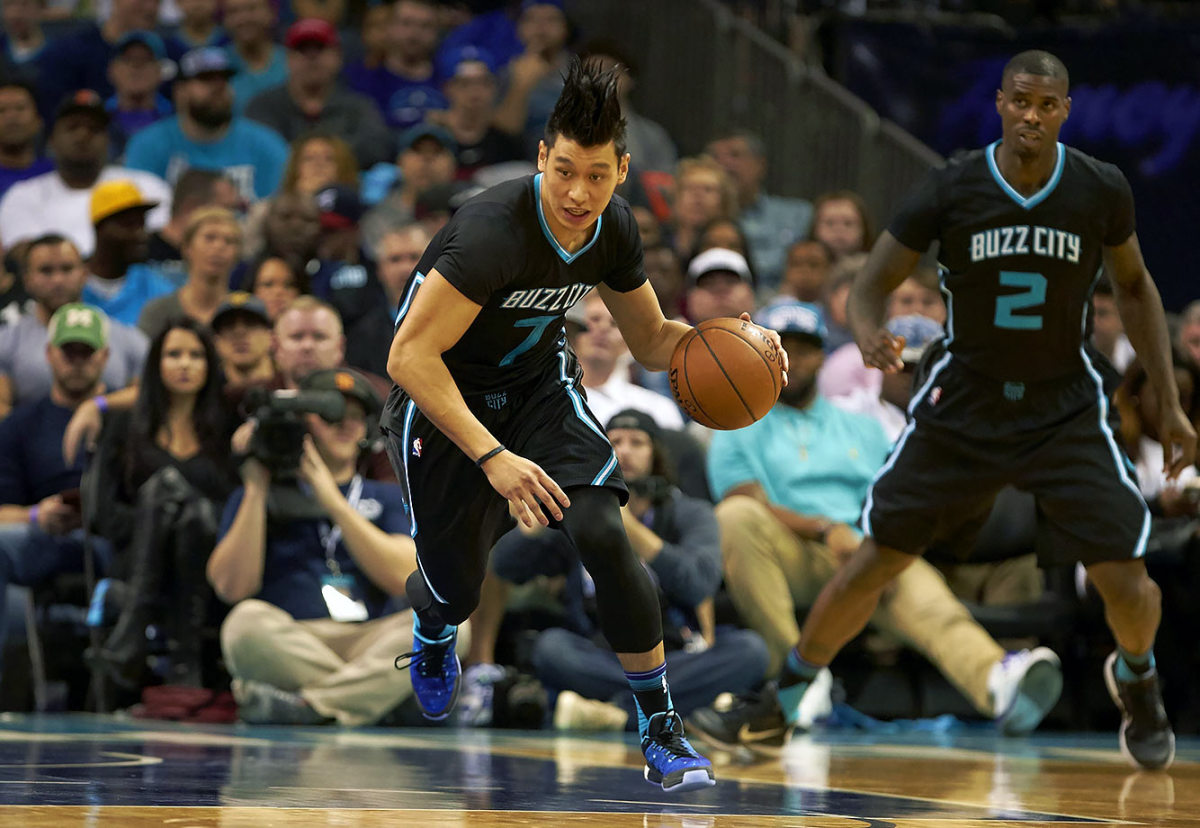
The best option on the board for teams looking to invest in a downhill driver on a reasonable budget. Lin spent the earlier days of his career pushing wildly into traffic with no discernible plan and few skill-based contingencies. The most important development of his career was his learning of what plays might be a lost cause. Fewer of Lin’s drives than ever are dead ends, leading to a career-low turnover rate. Still he looks to attack the basket out of the pick-and-roll and when kicked the ball on the weak side. Those possessions are simply less fretful now that Lin has a better understanding of when to take a mulligan and regroup the offense.
E’Twaun Moore: Atlanta Hawks
Another year, another need for the Hawks to make good on their value propositions. The same developmental pipeline that improved upon the games of Bazemore and DeMarre Carroll could next set its sights on Moore—an all-around competent wing who came into his own for the Bulls last season. The smart, conservative feel of Moore’s game speaks to the preferences of Hawks head coach and general manager Mike Budenholzer. One could see him balancing the wilder streaks in Dennis Schroder’s game, slashing to complement Kyle Korver’s shooting, and doing enough off the dribble to lend Atlanta a touch of dynamism in that spot should Bazemore decide to move elsewhere.
Maurice Harkless: New York Knicks
Given that New York is short on both athleticism and wing players of any kind, Harkless seems a practical choice. The jumper is a real concern; Harkless is shaky (and reluctant) enough from the perimeter that teams take notice and play him accordingly, which can create problems elsewhere on the floor. Yet considering that a two-way wing with a jumper would cost dramatically more than Harkless might, the financial tradeoff seems worthwhile to help the Knicks improve elsewhere. Add a defender and cutter who can swing between three positions and run the floor to help balance out the shot creation and defense the team already has. Worry about scheming around Harkless’s jumper later, when things like playoff scrutiny are actually a relevant problem.
